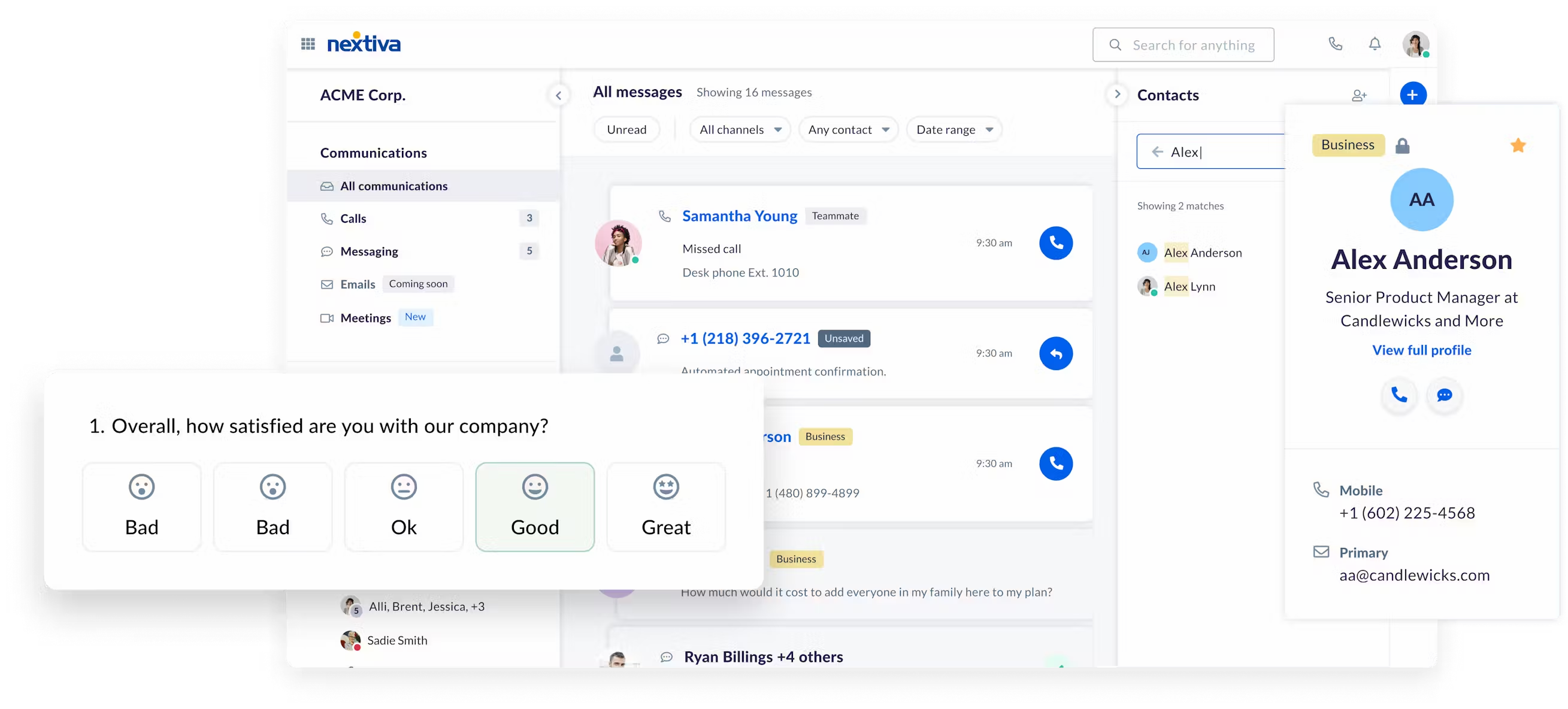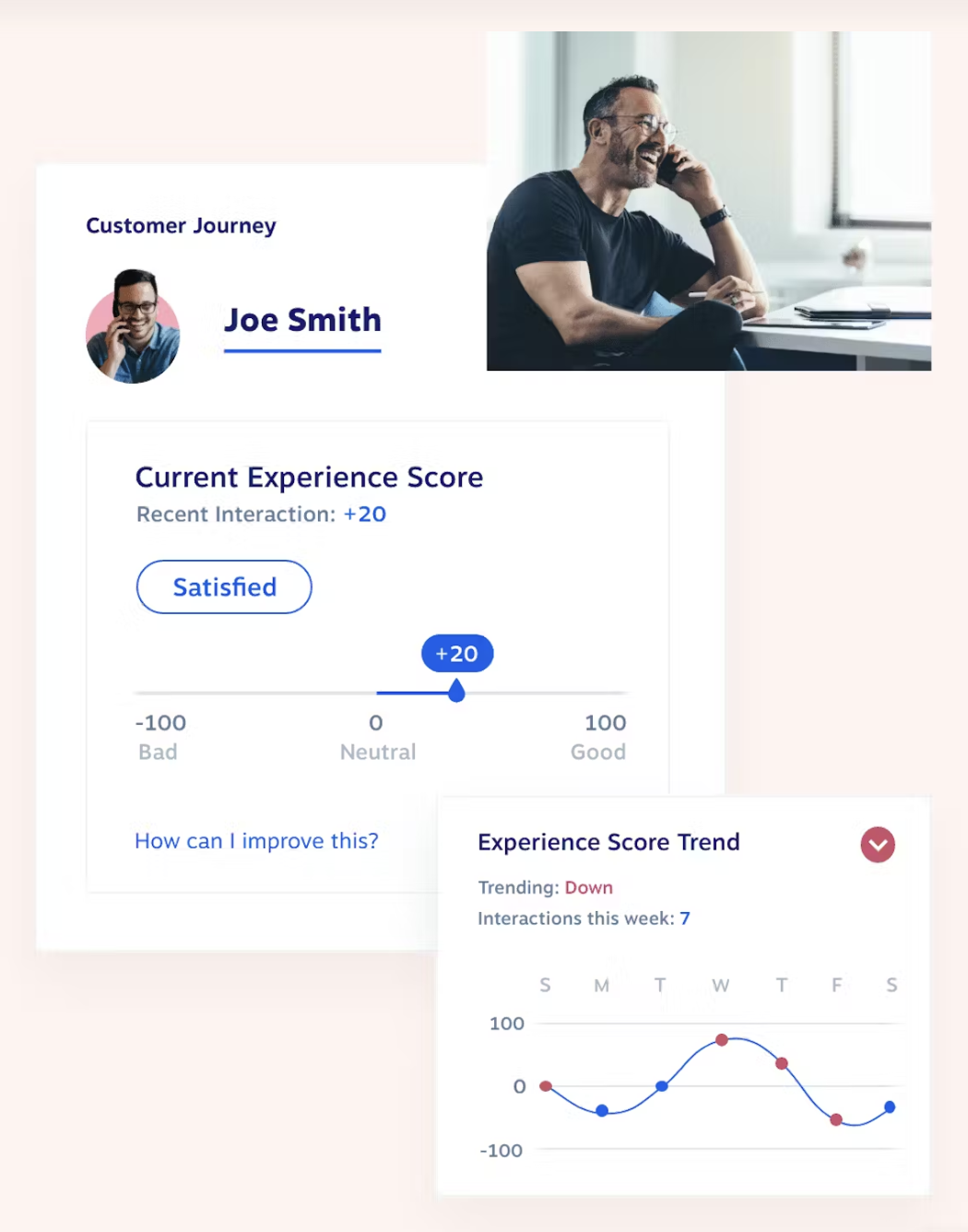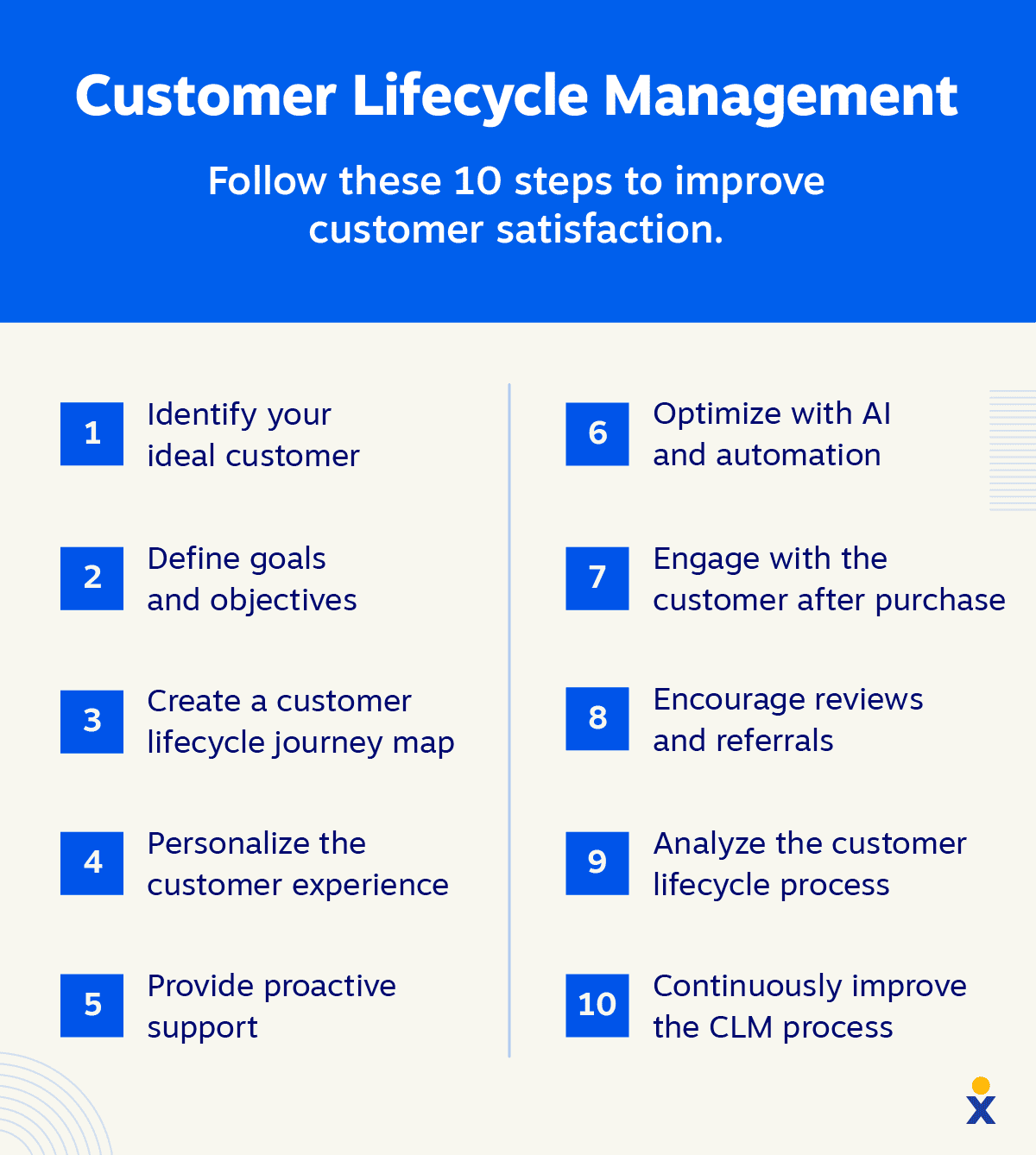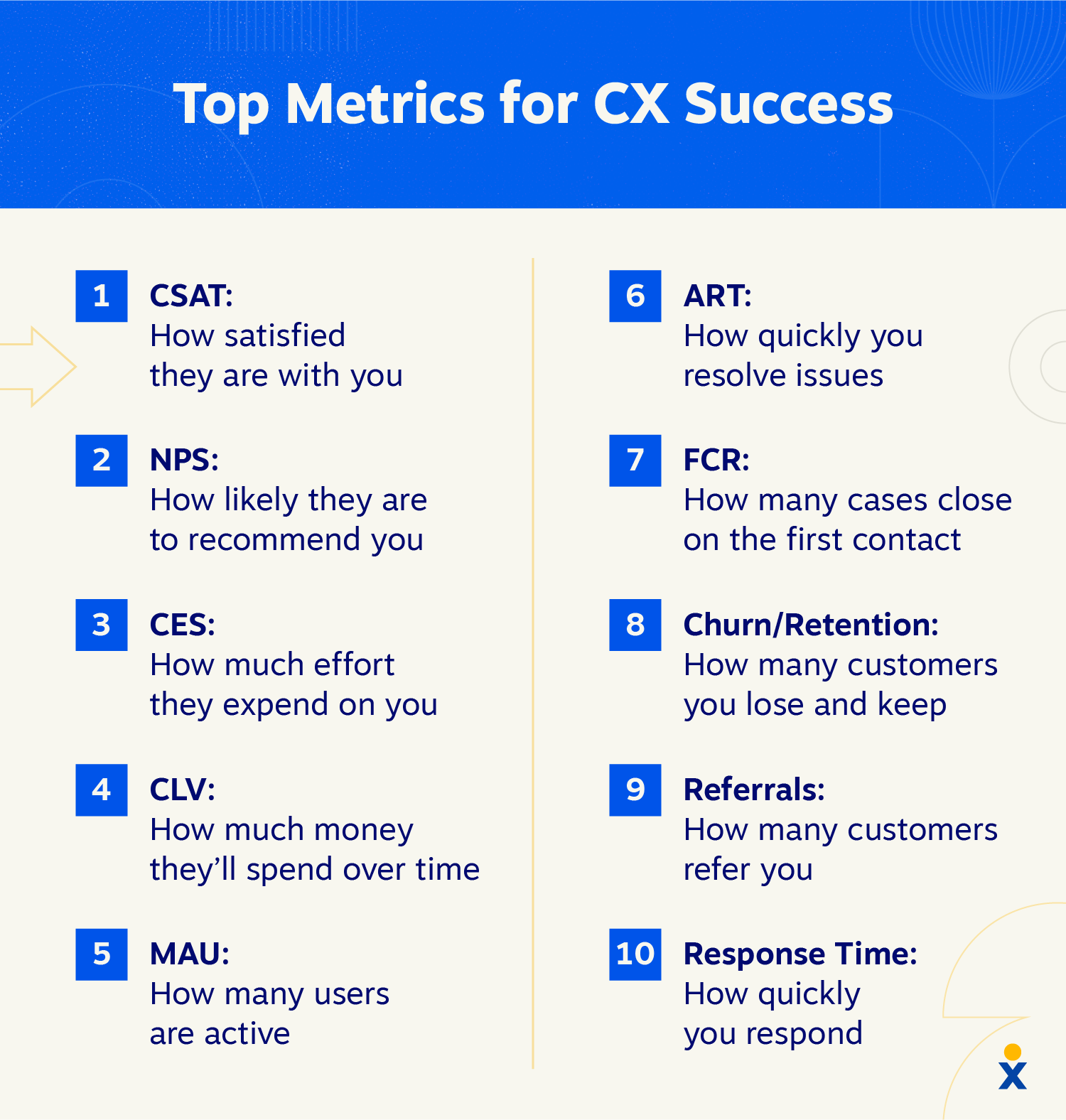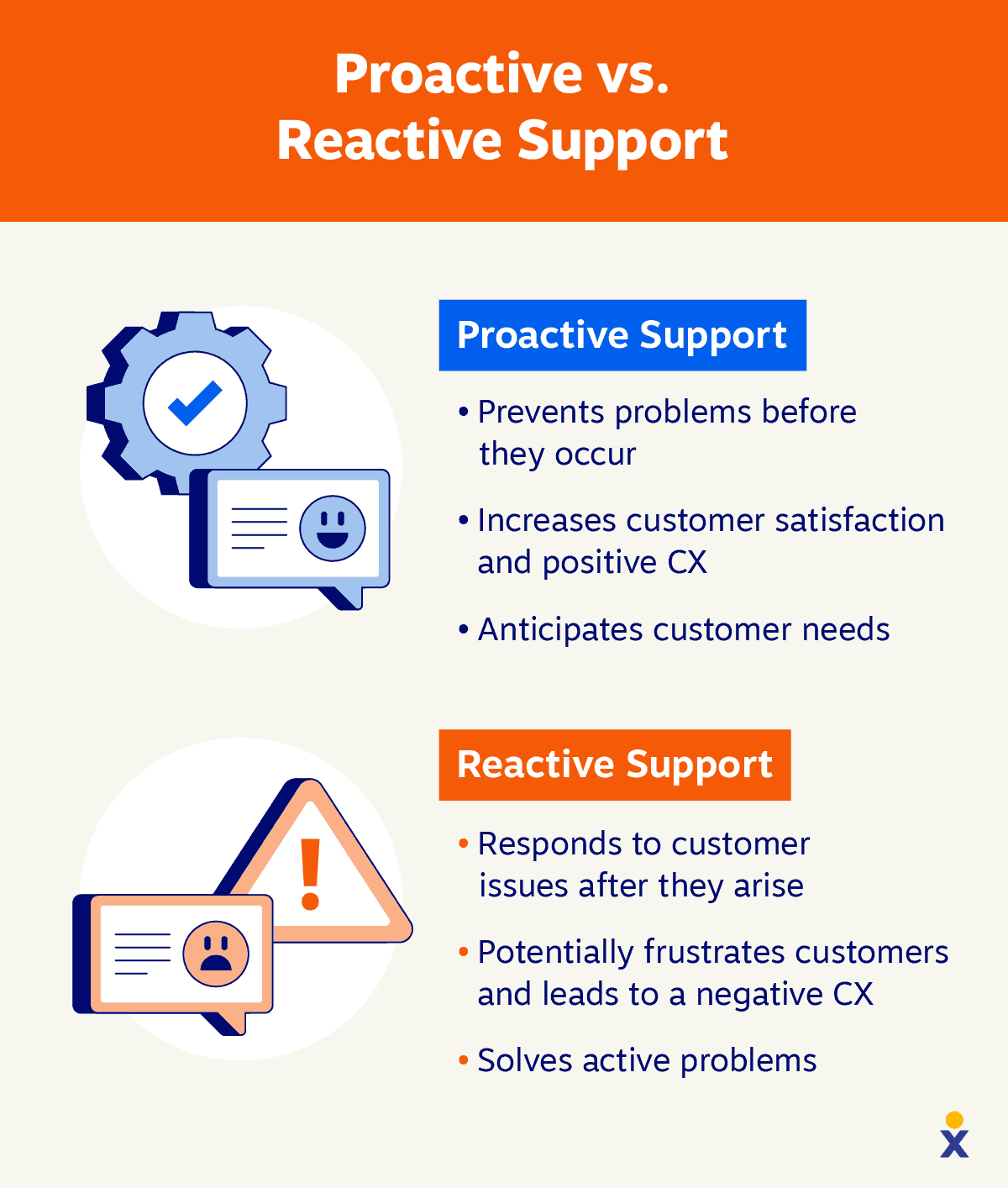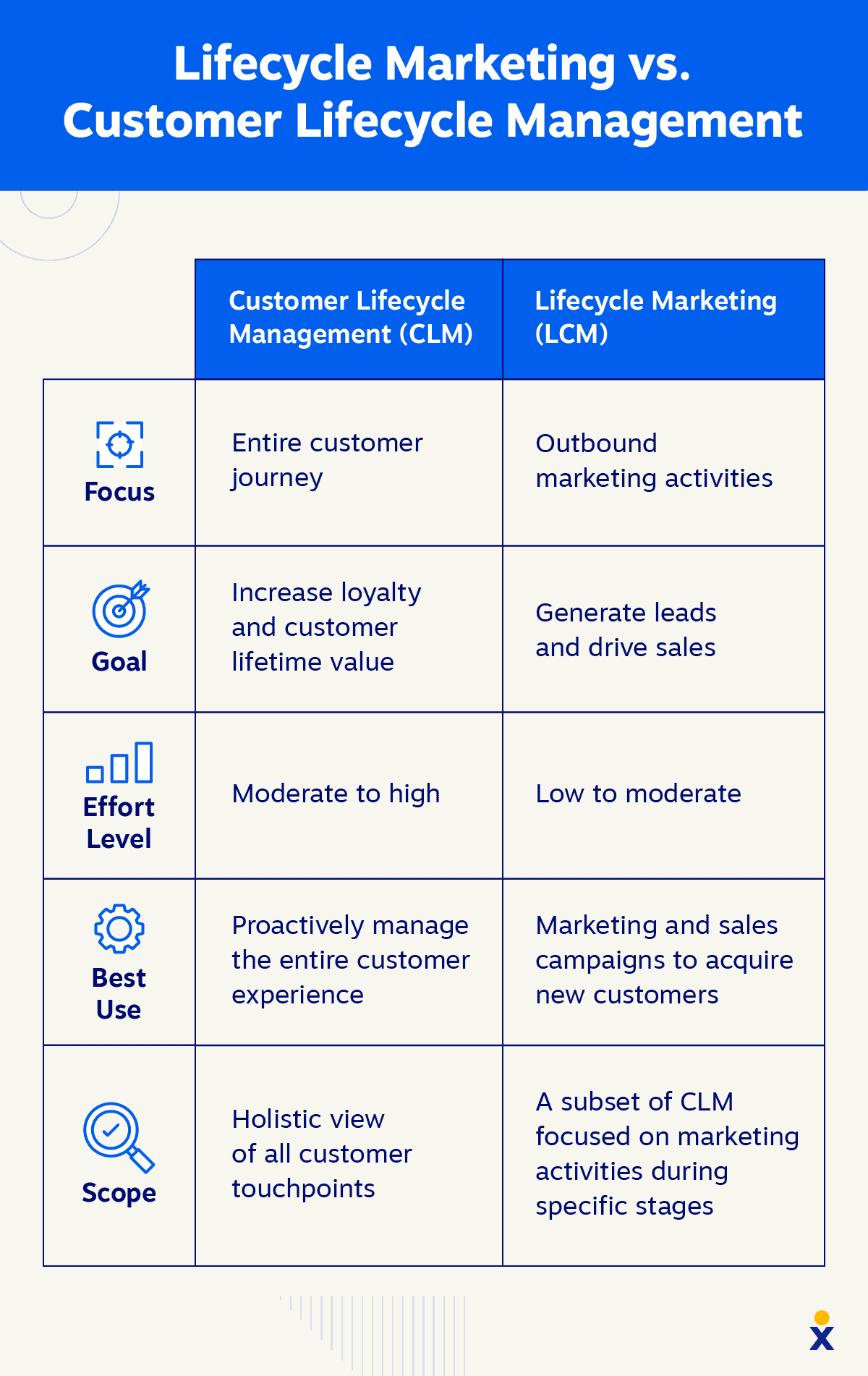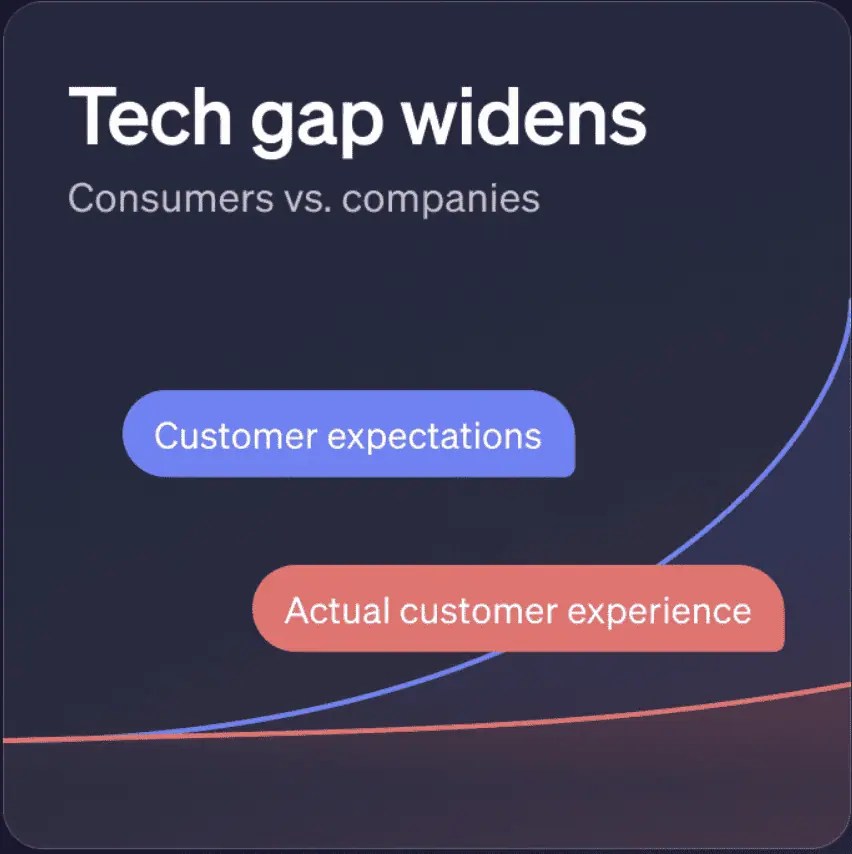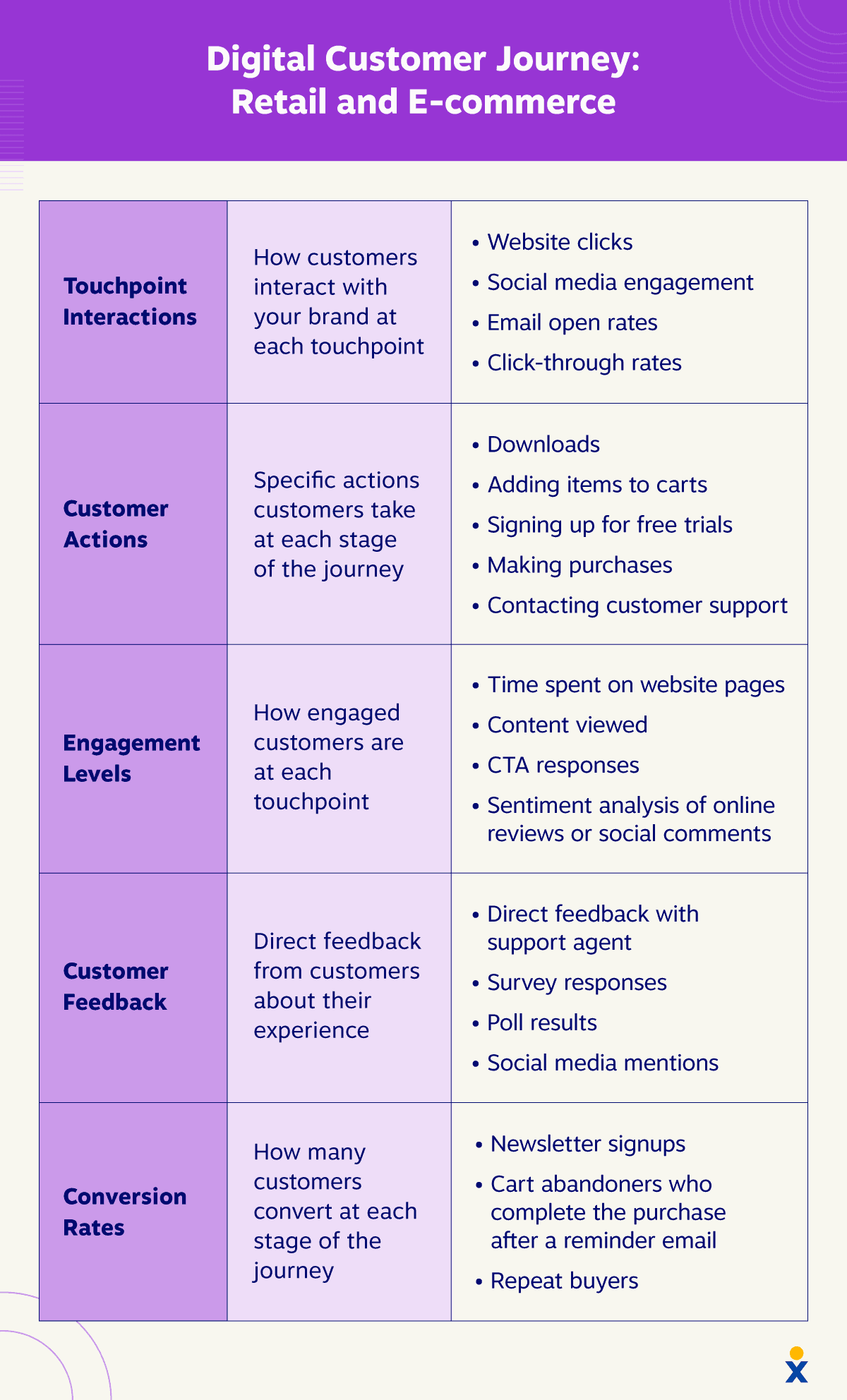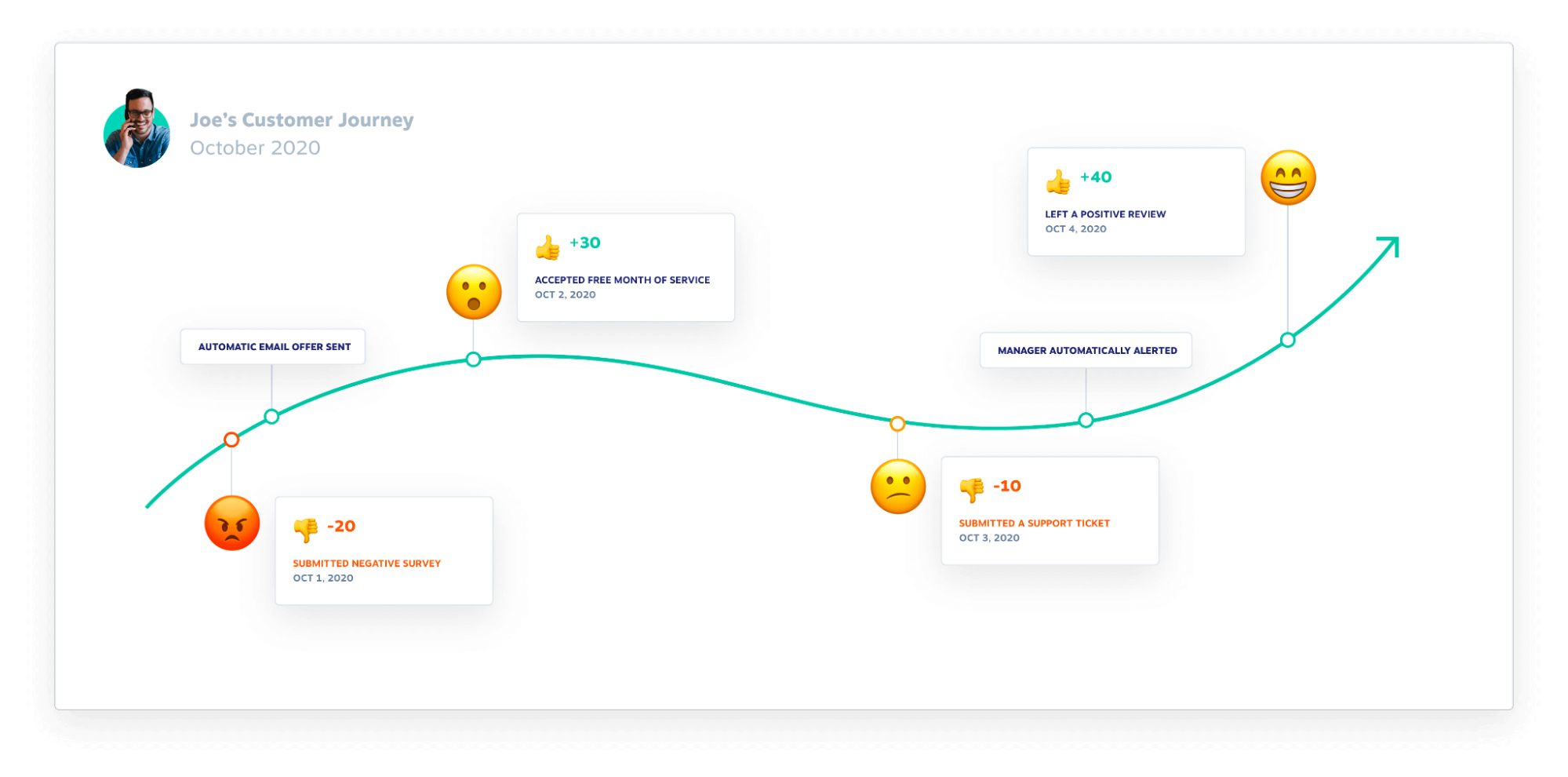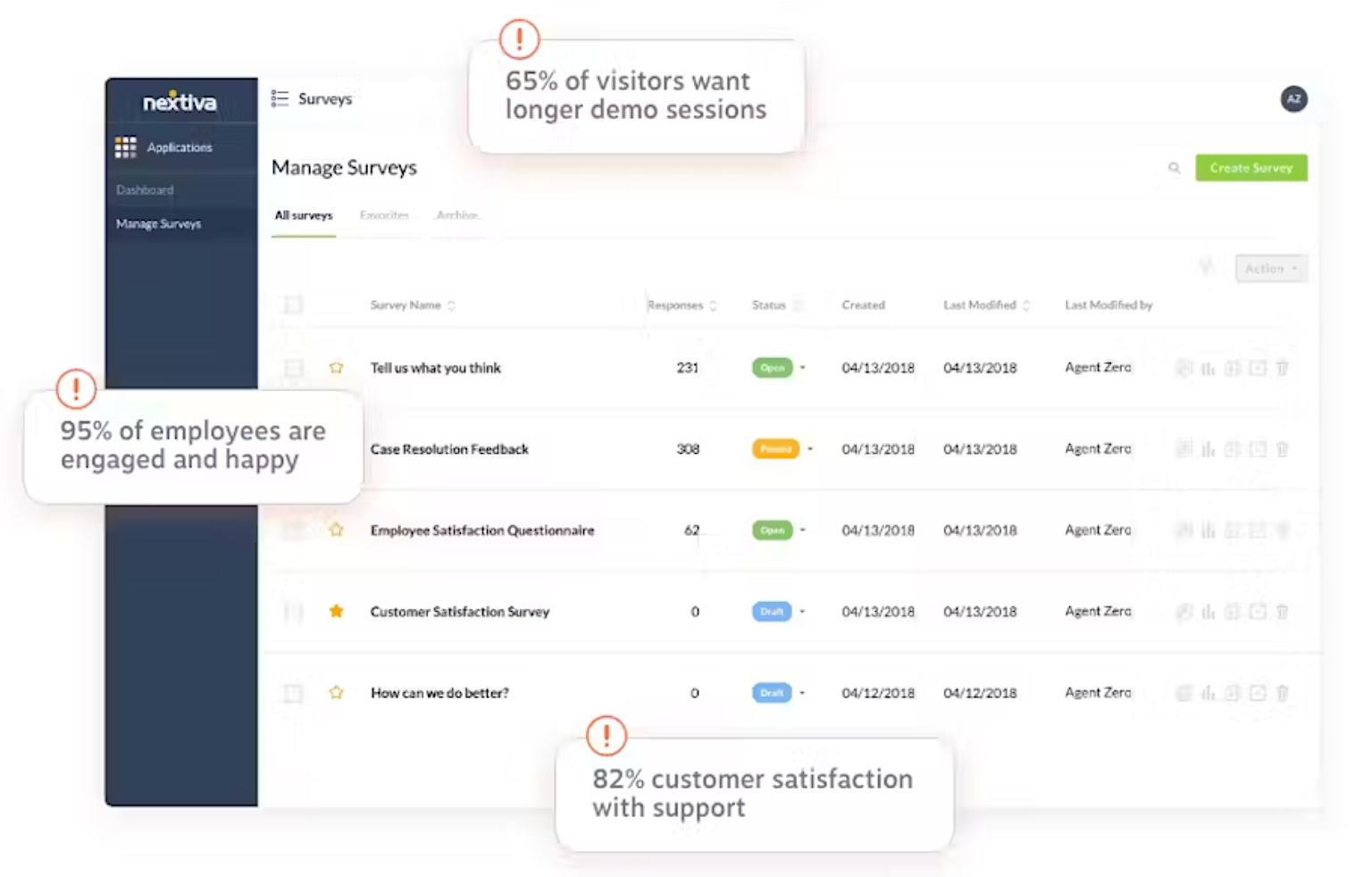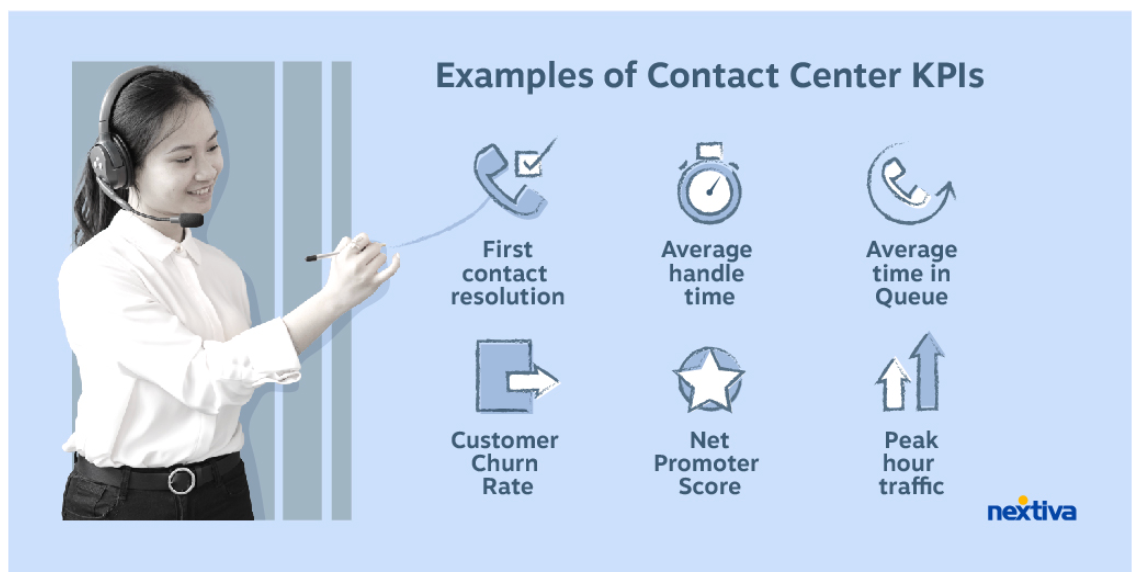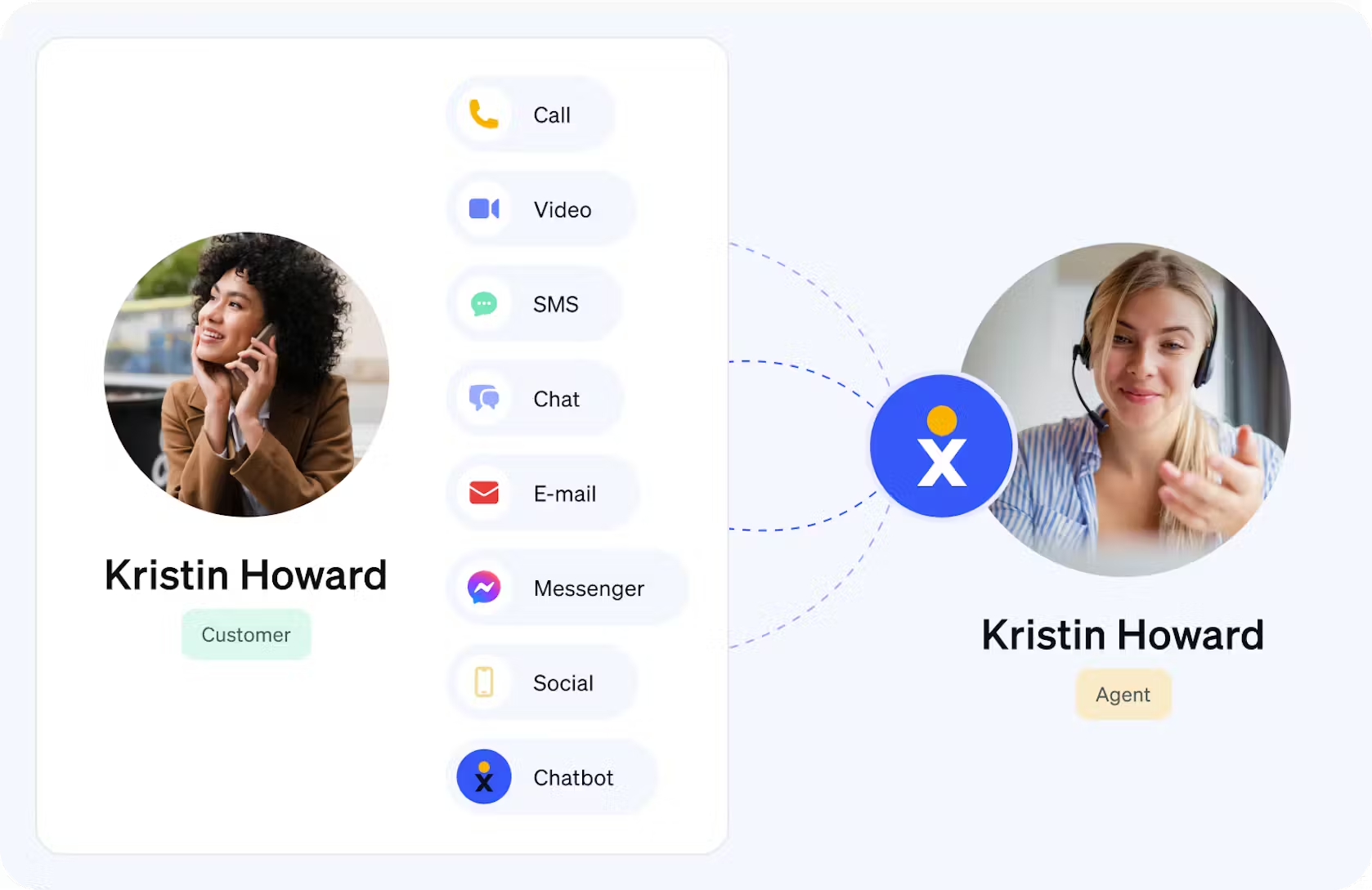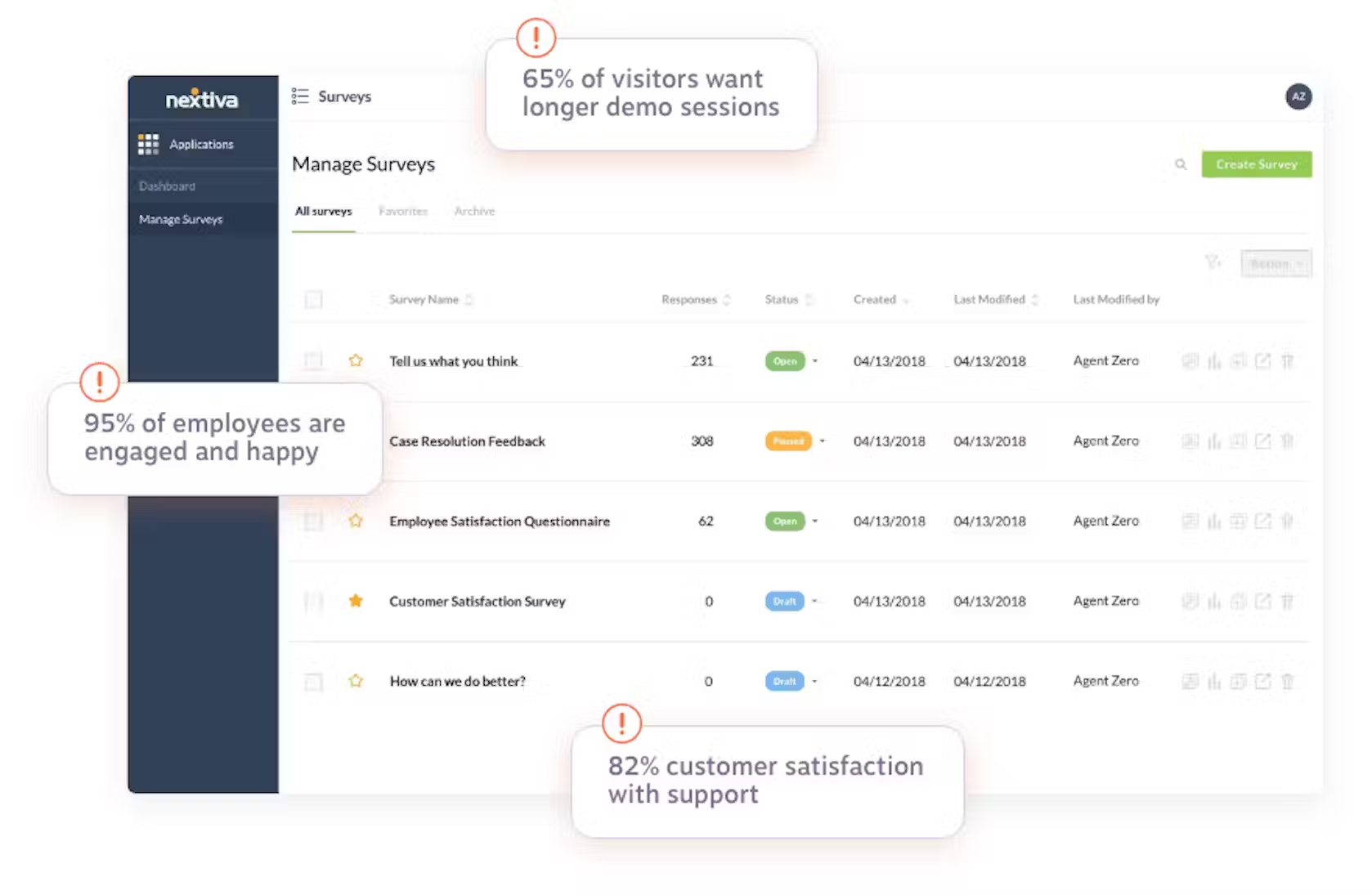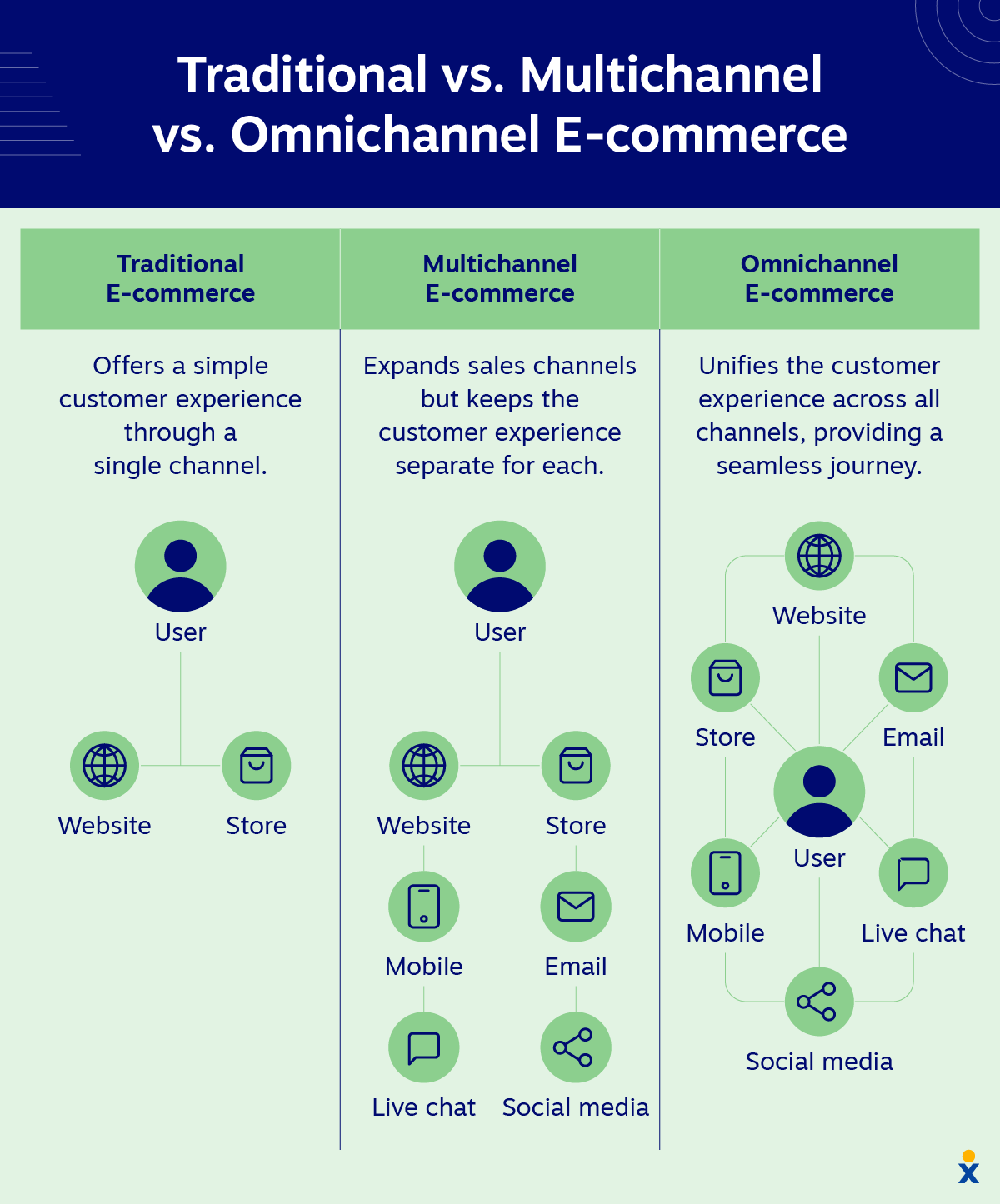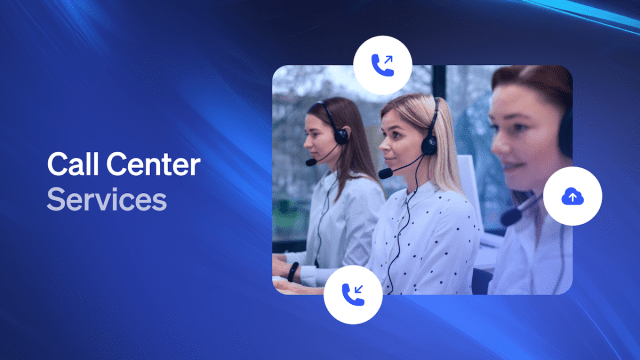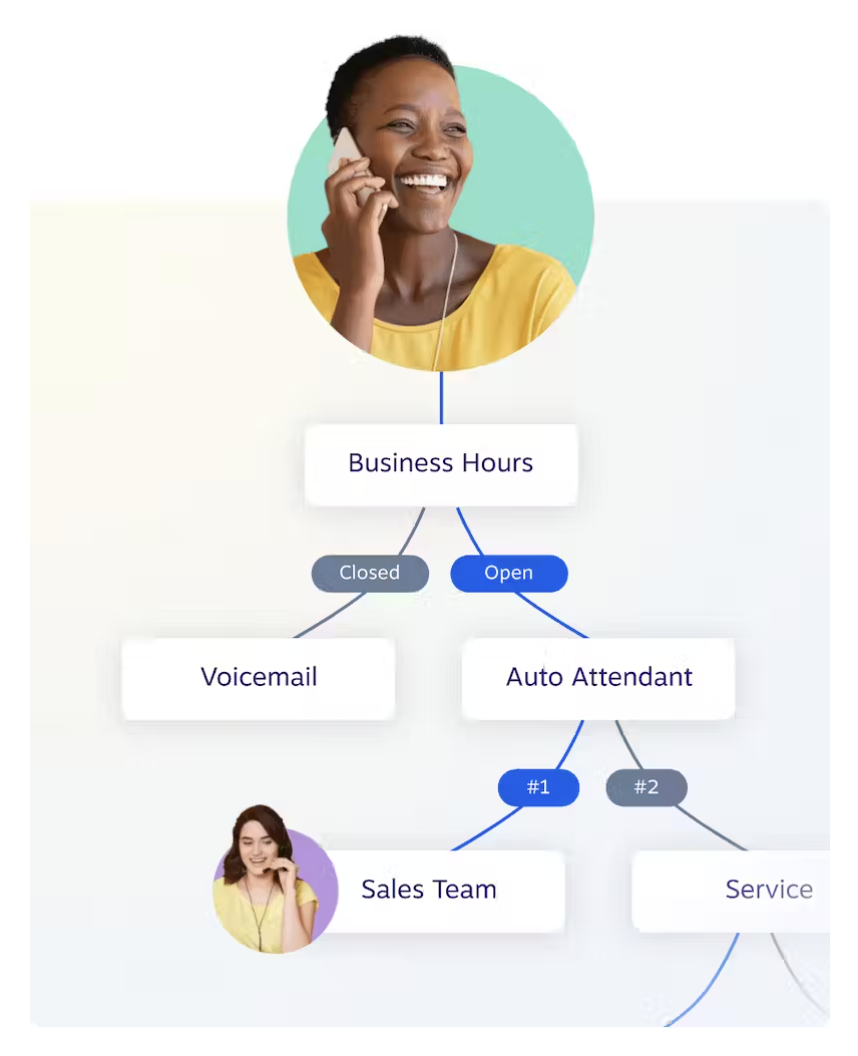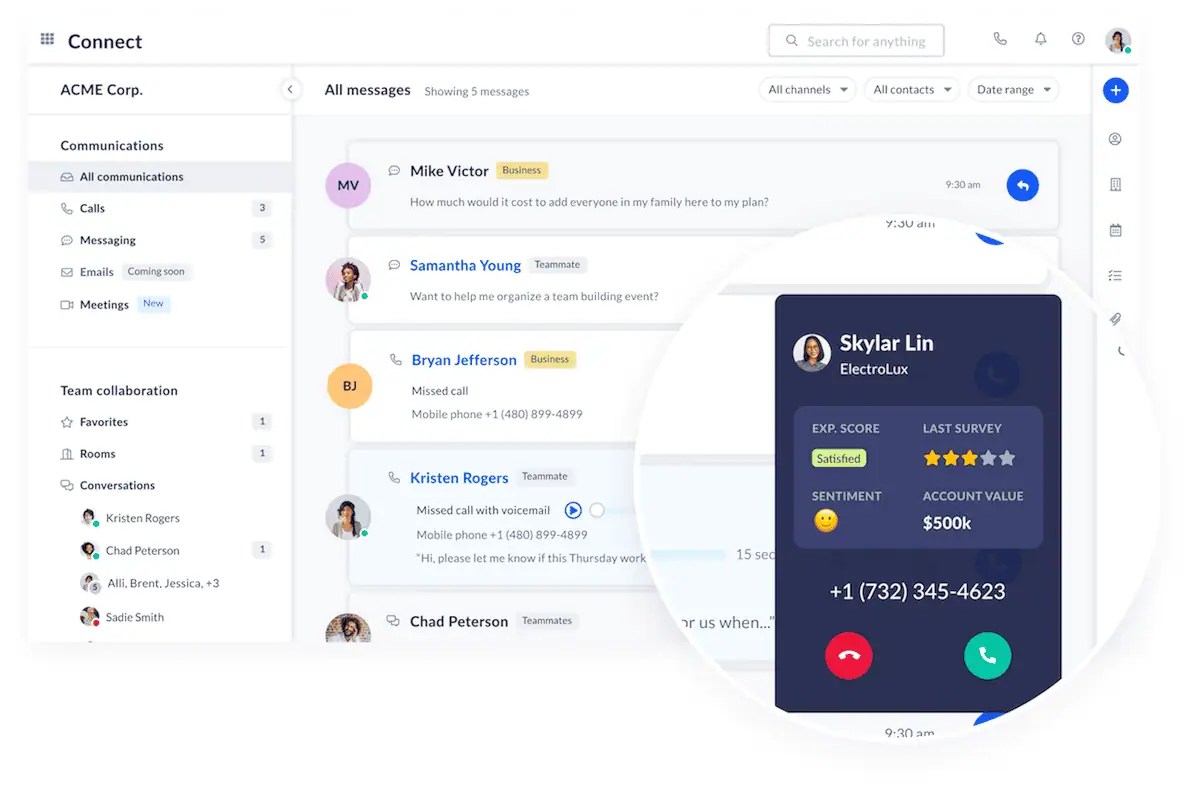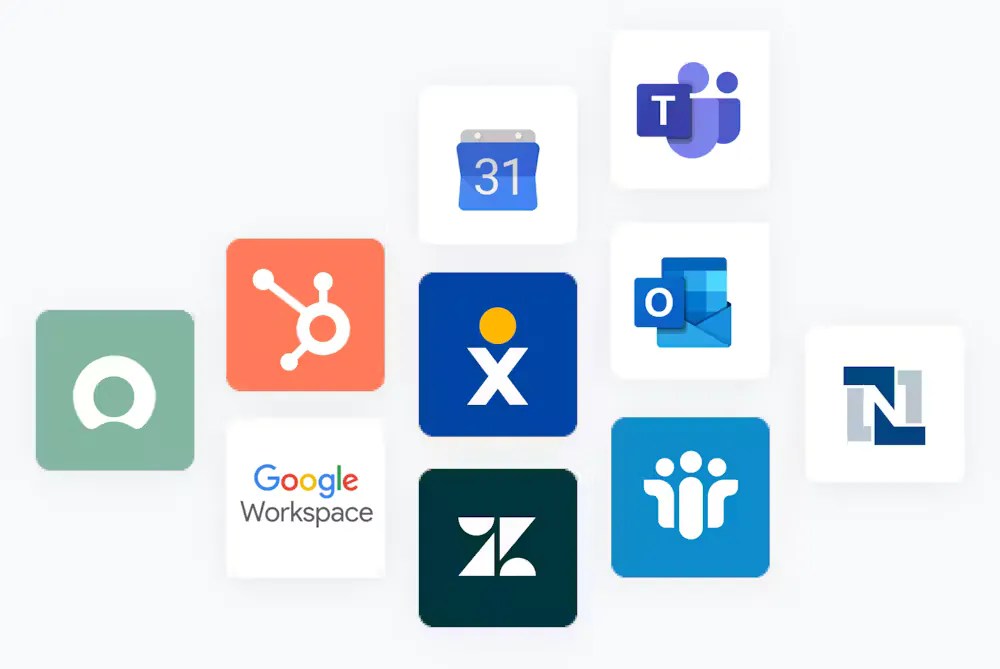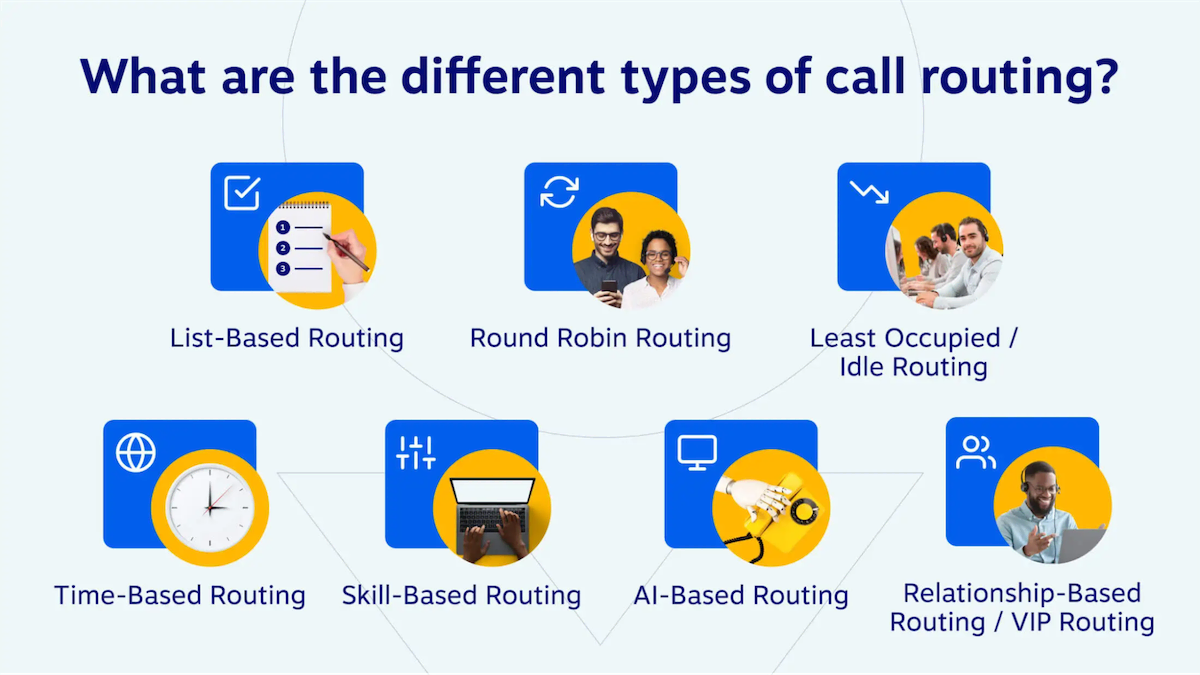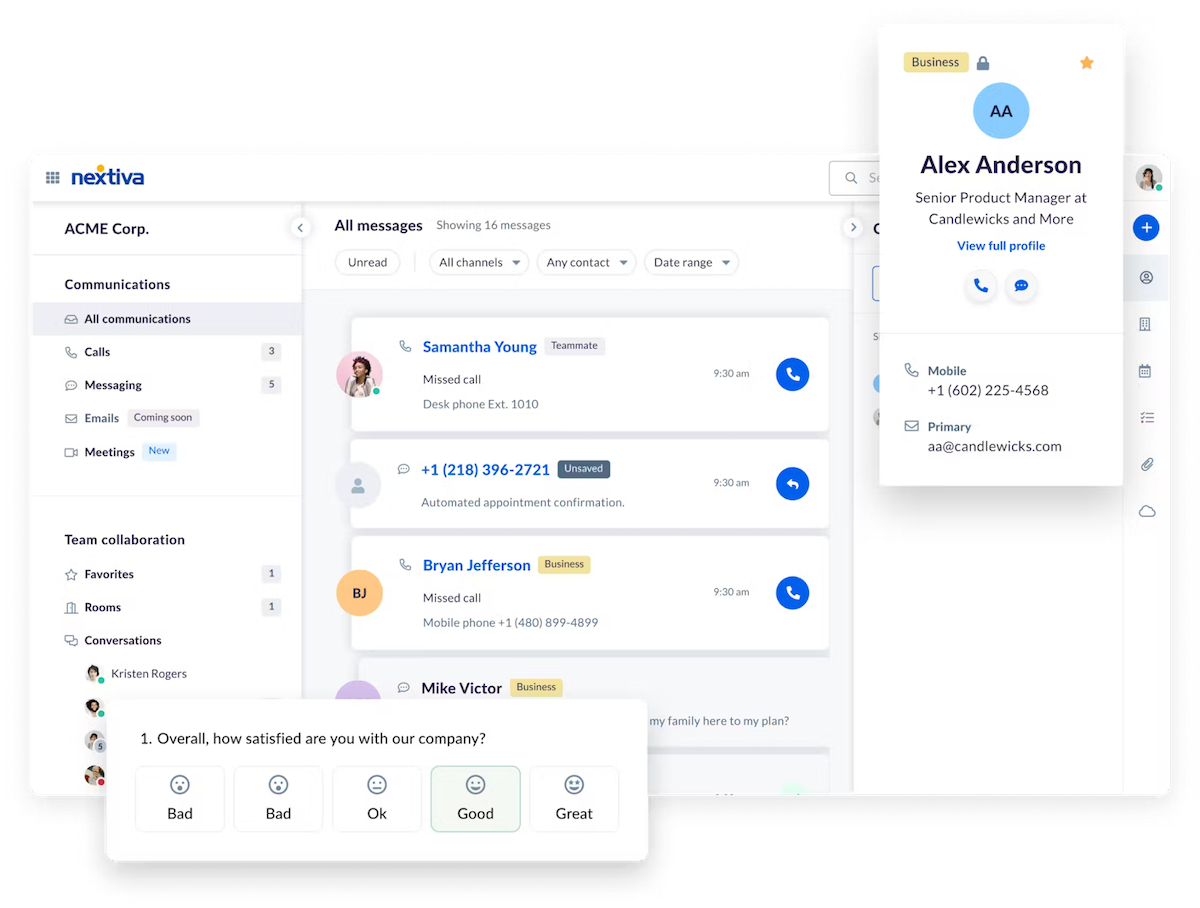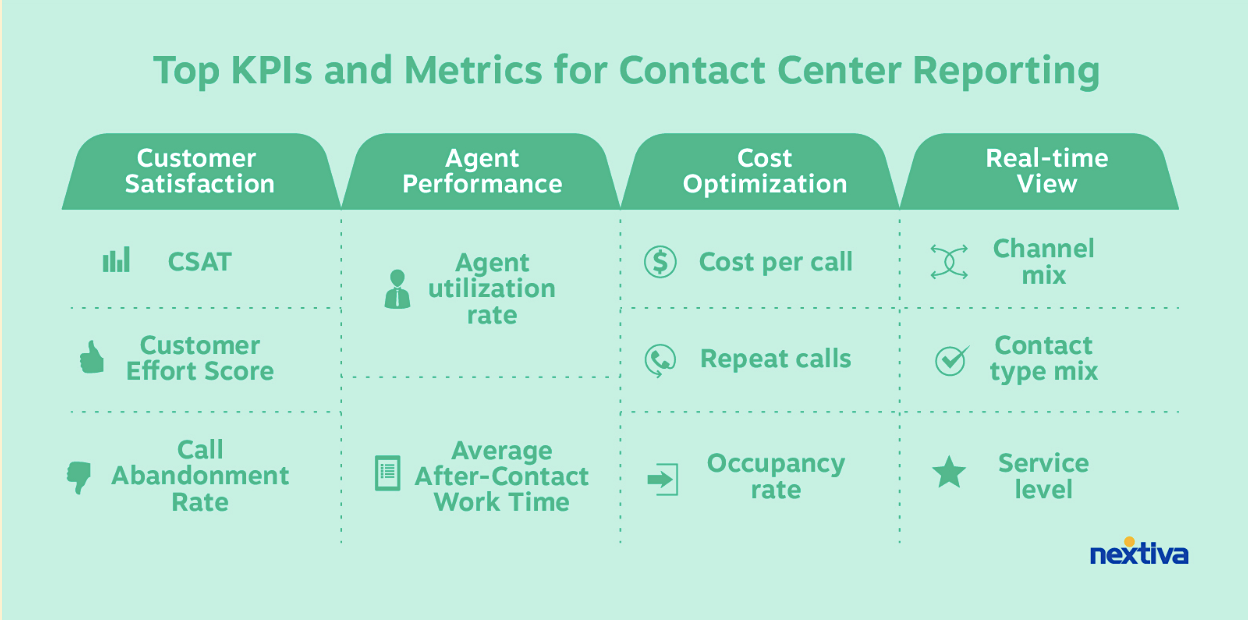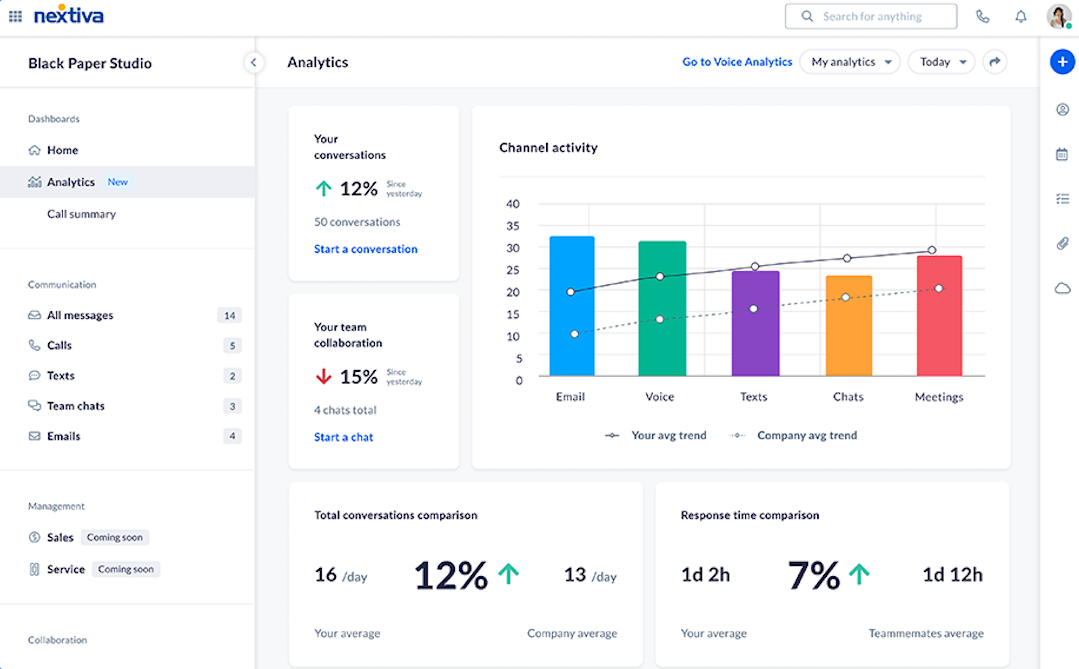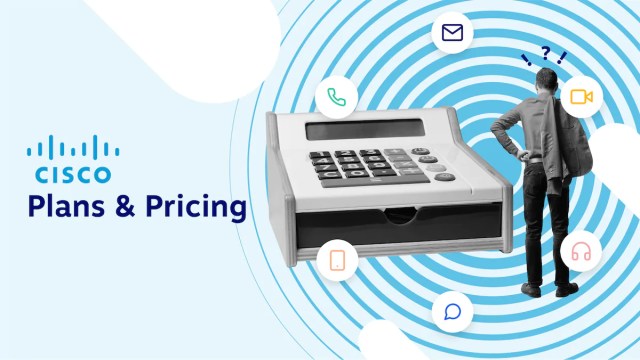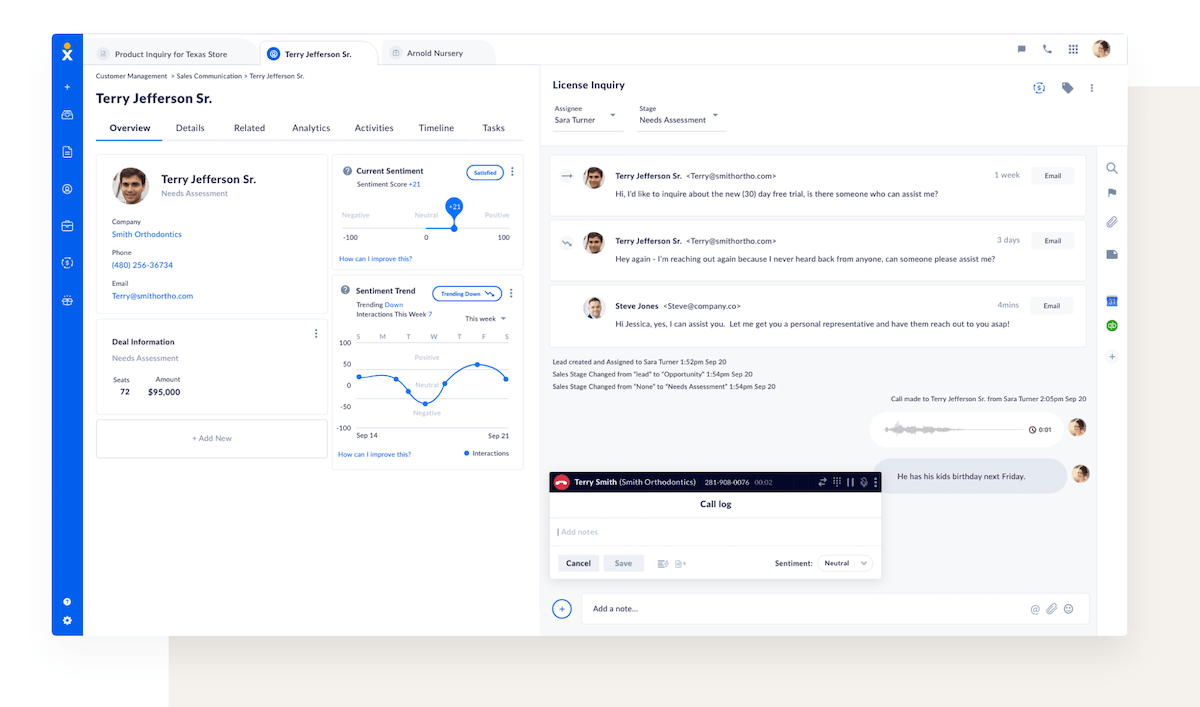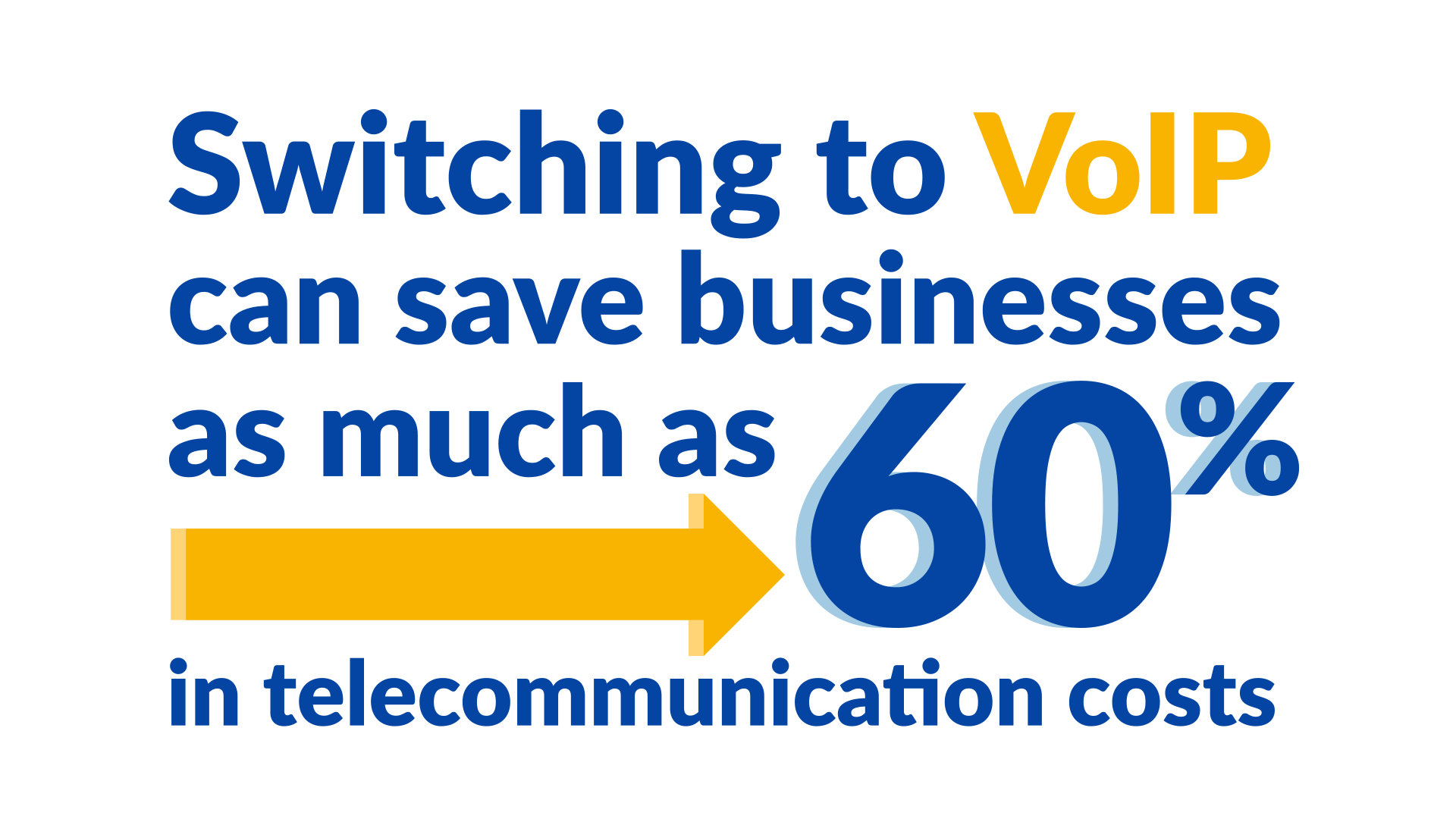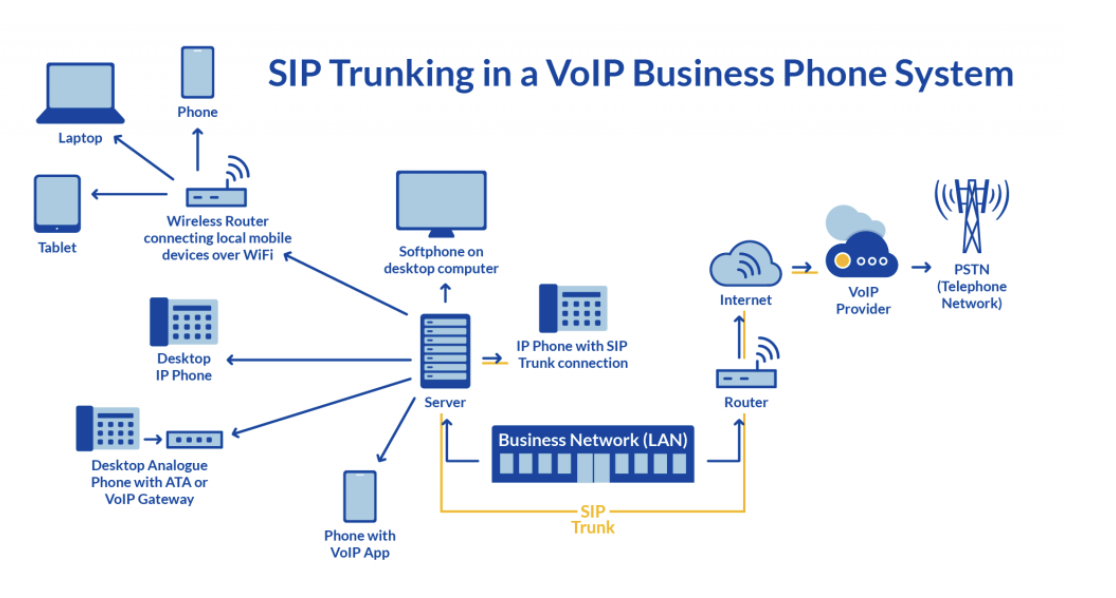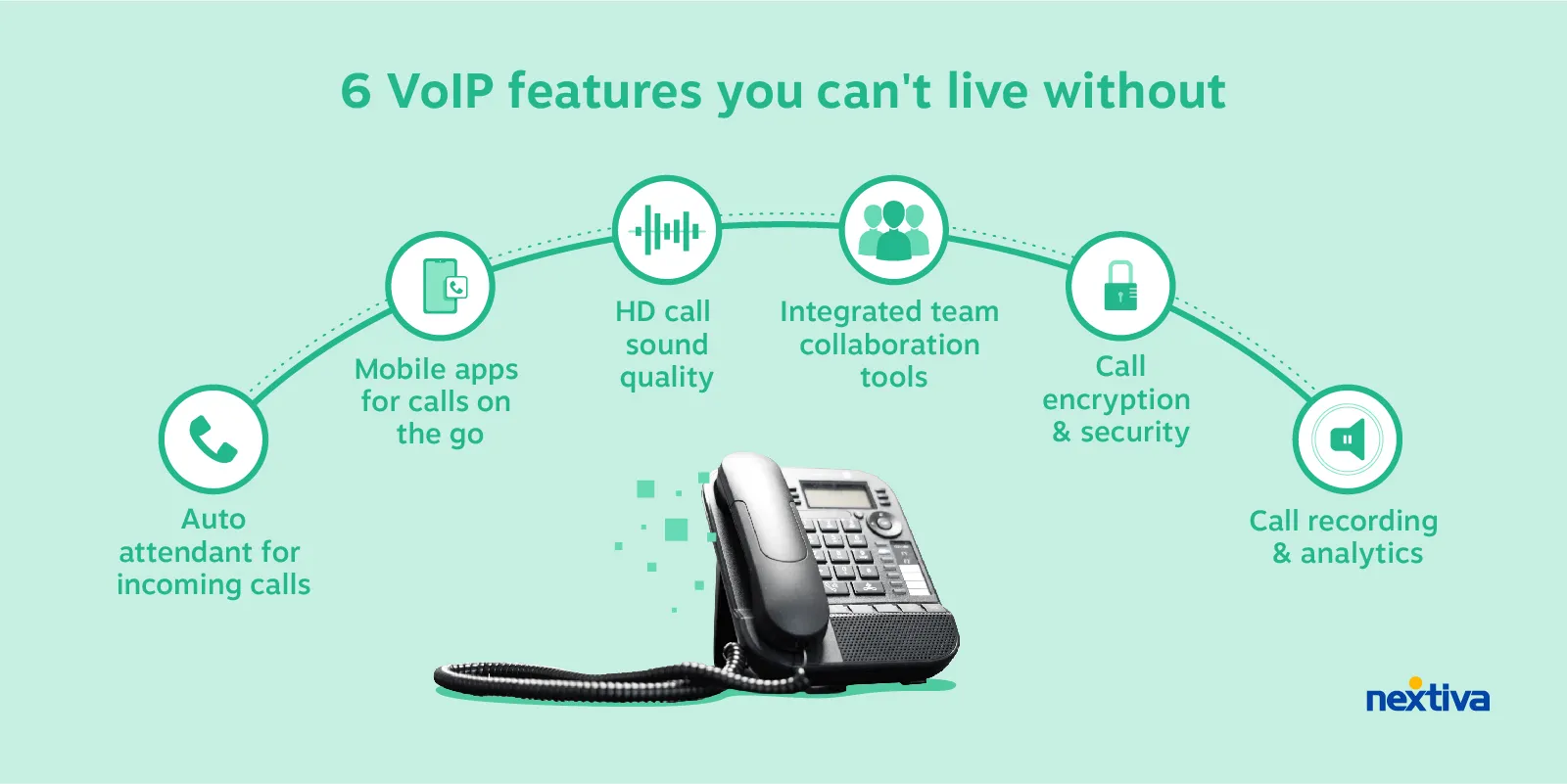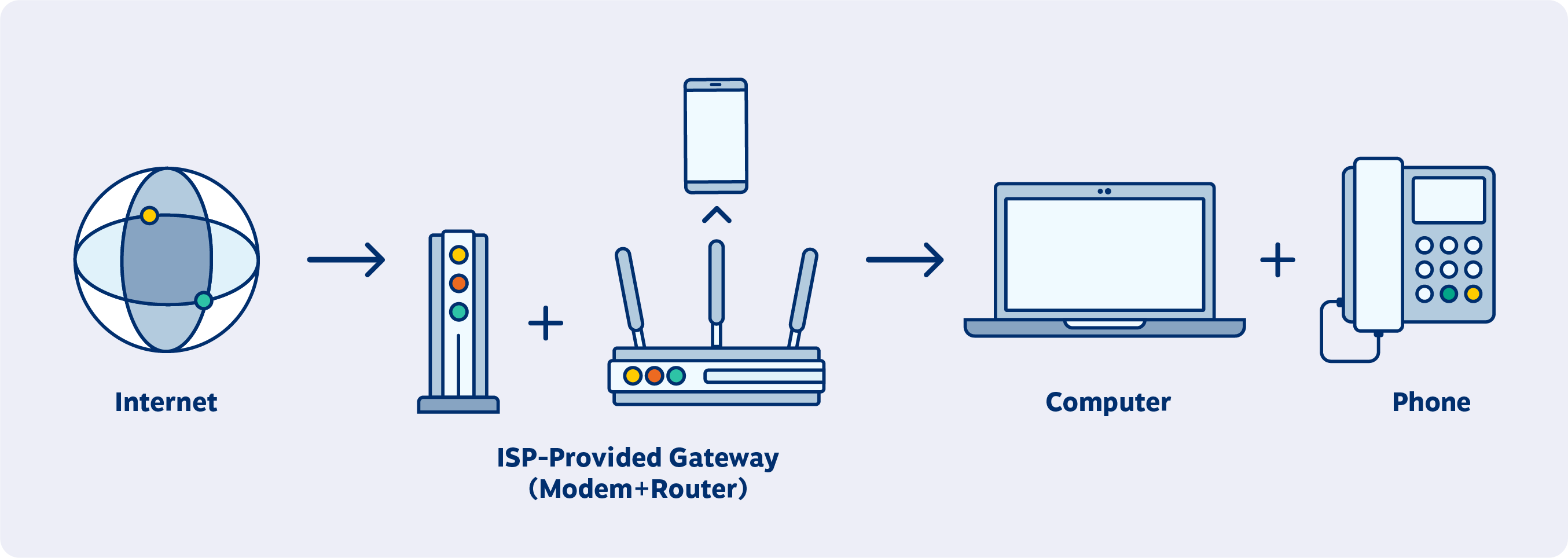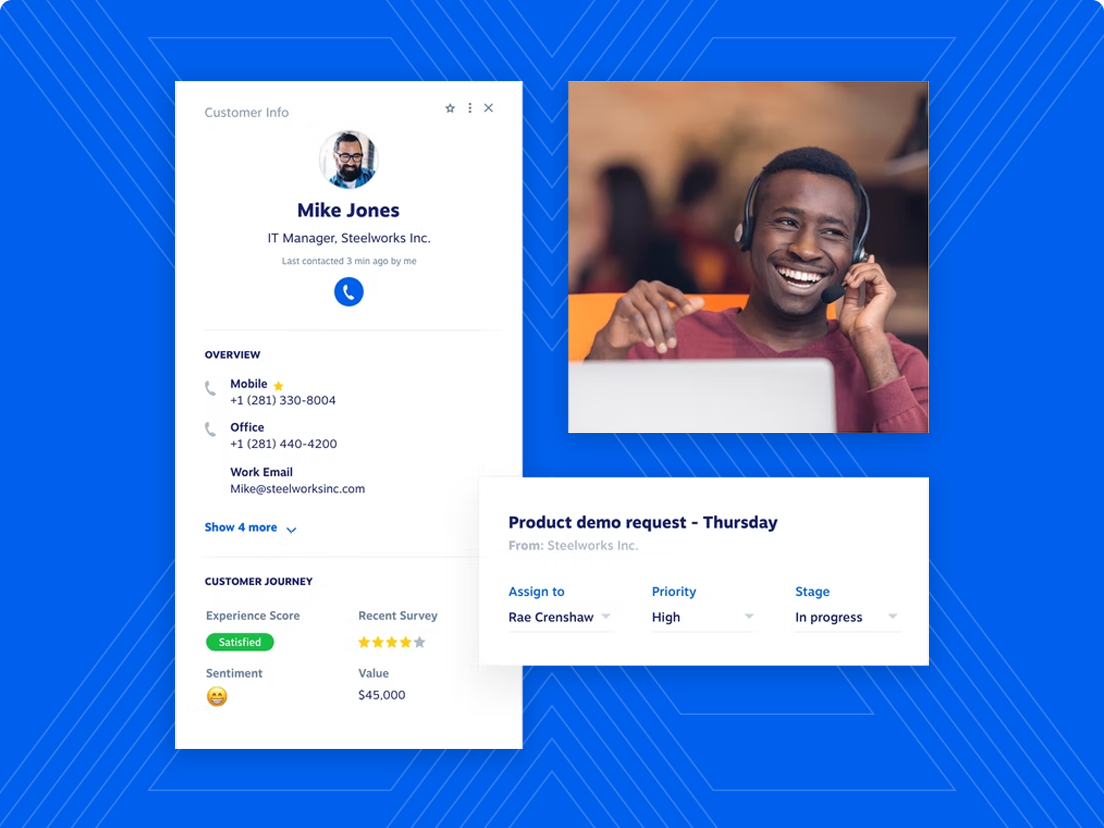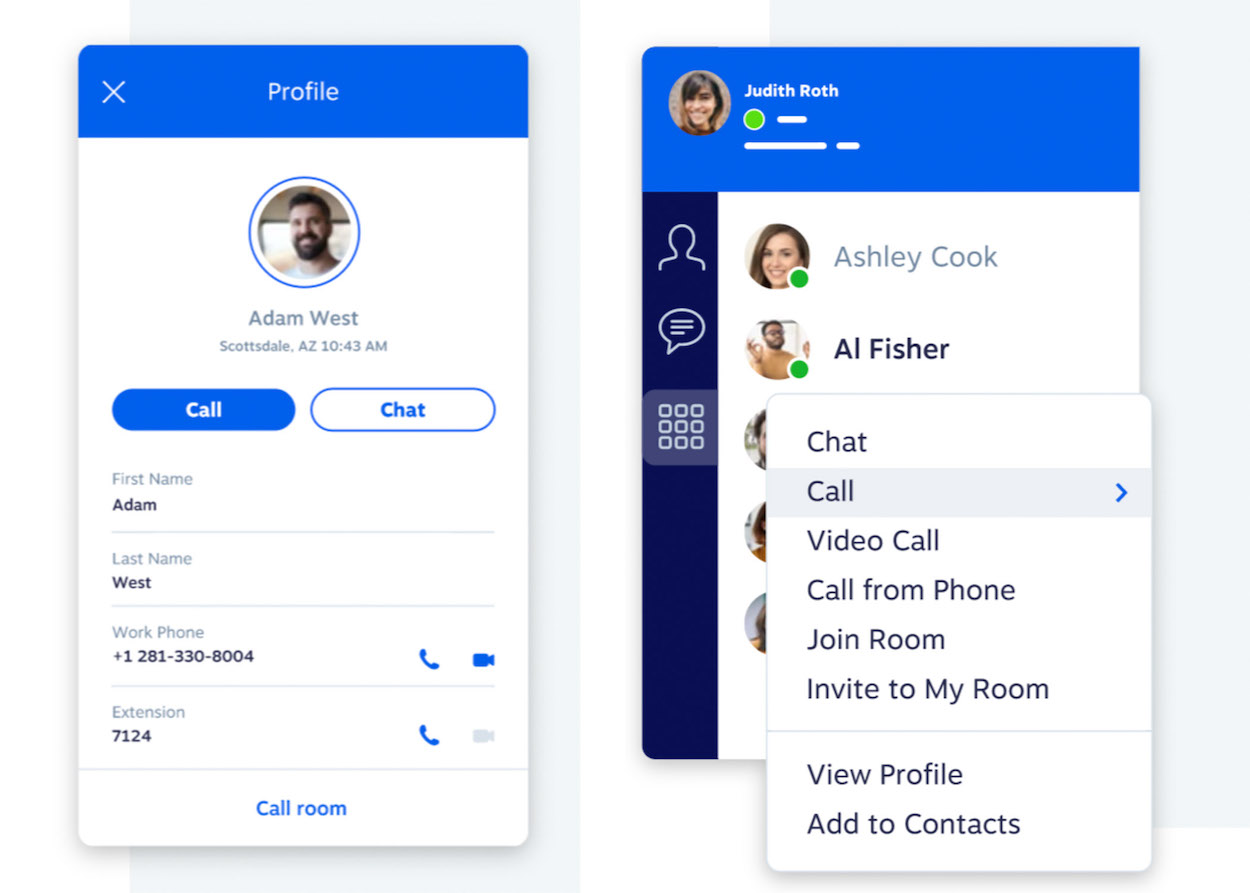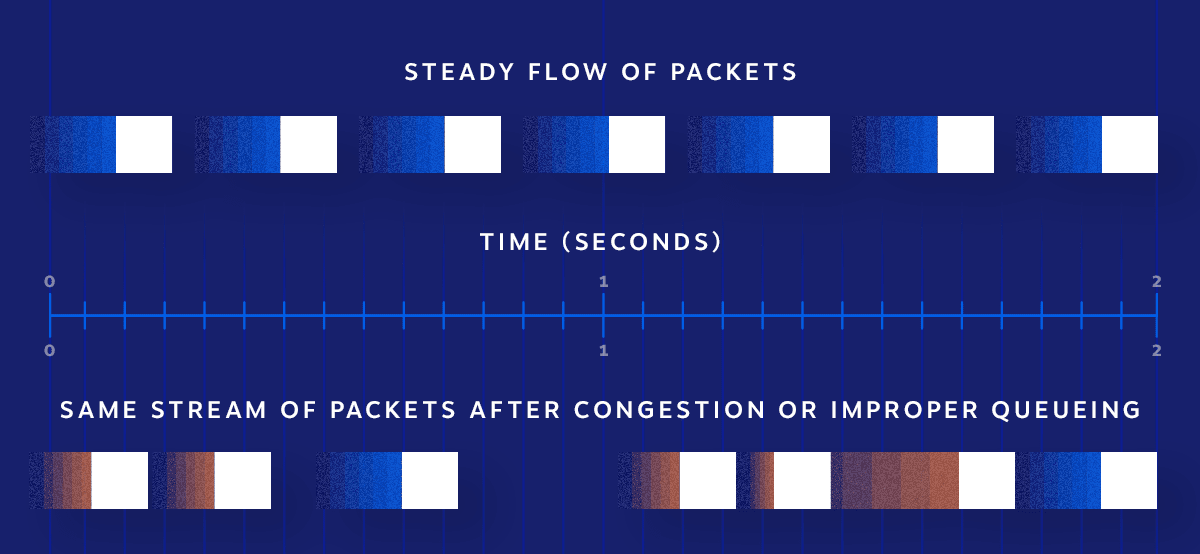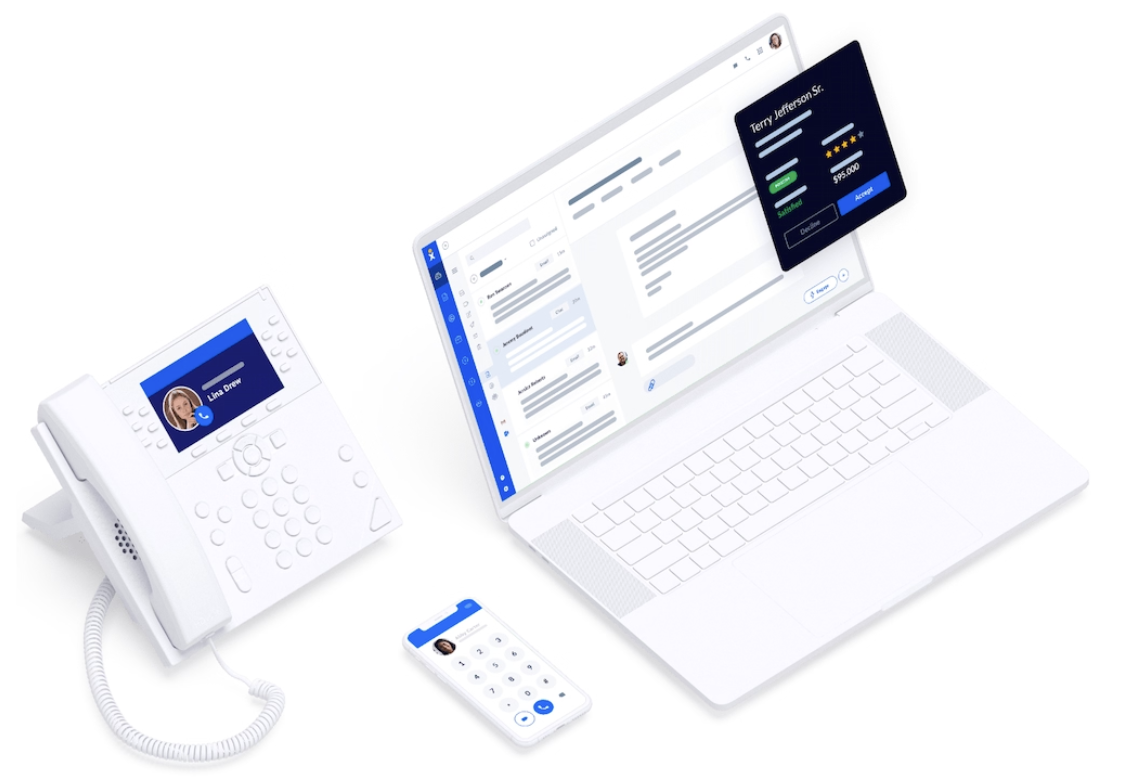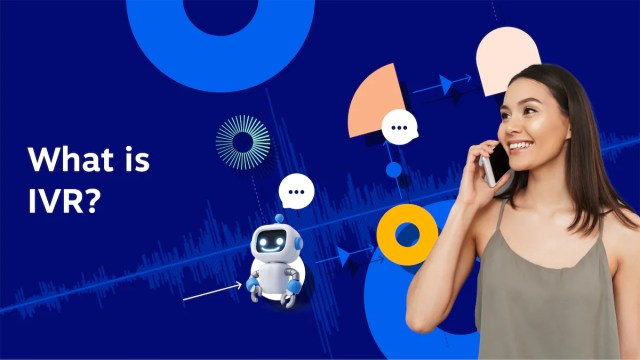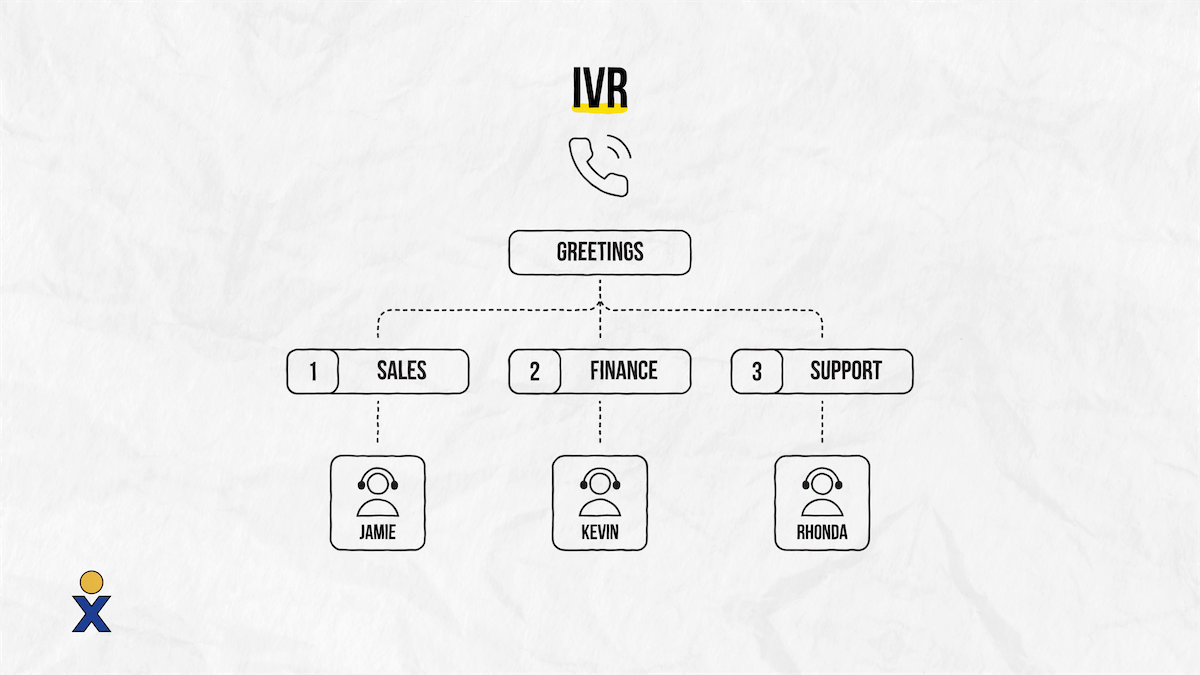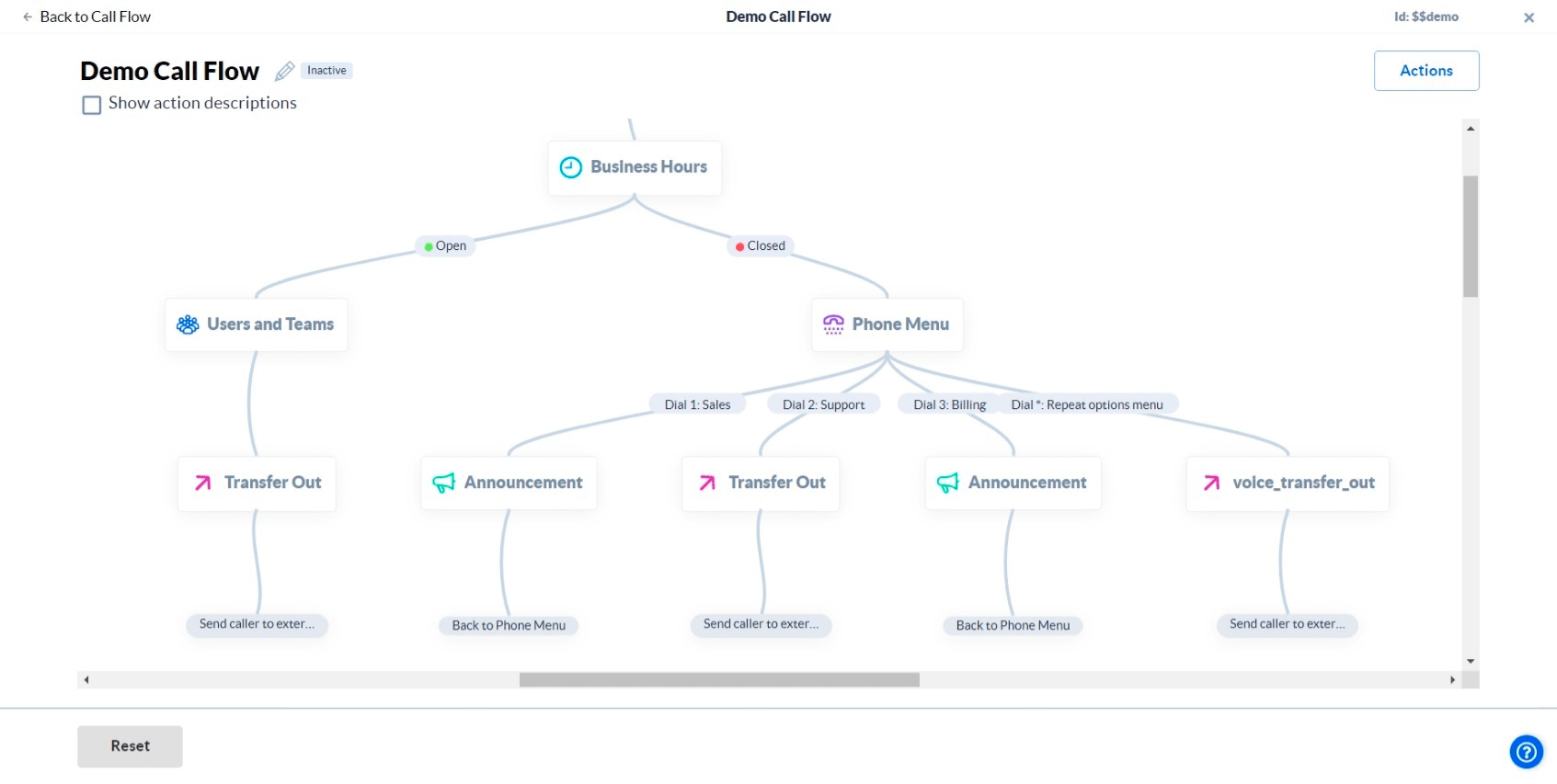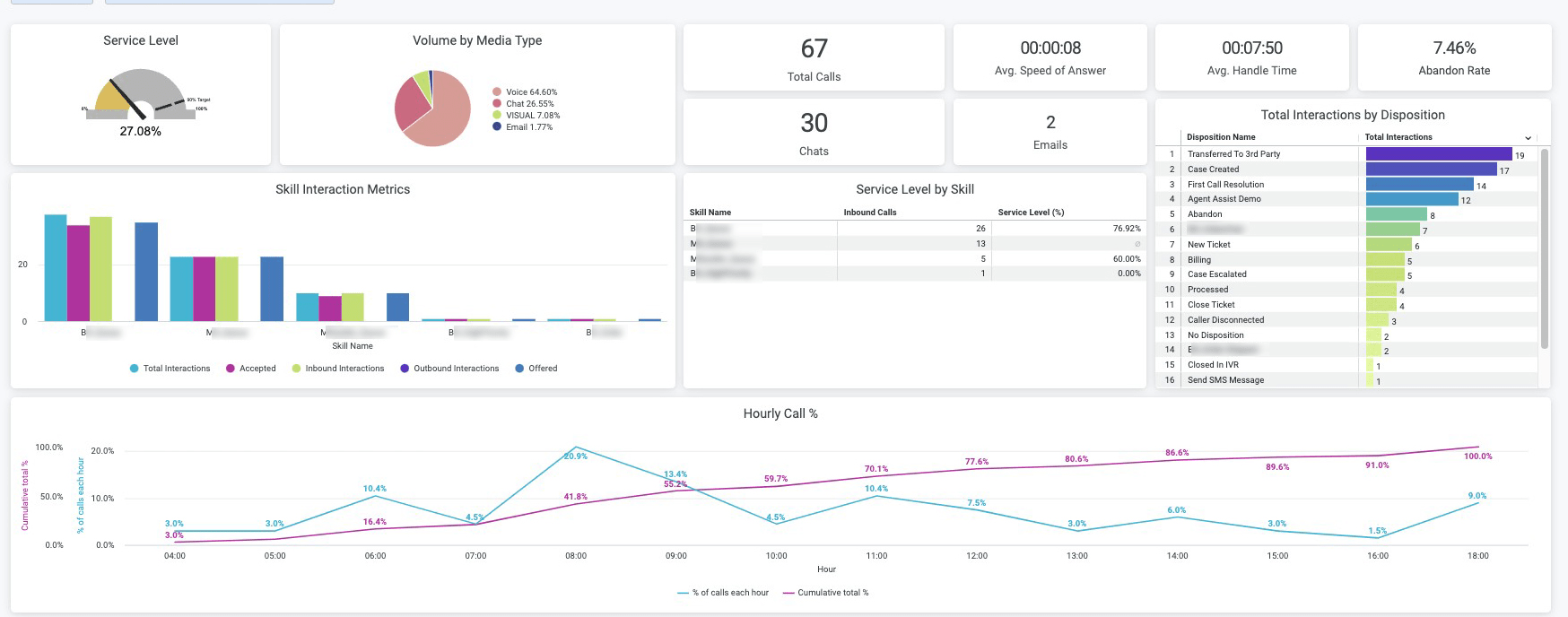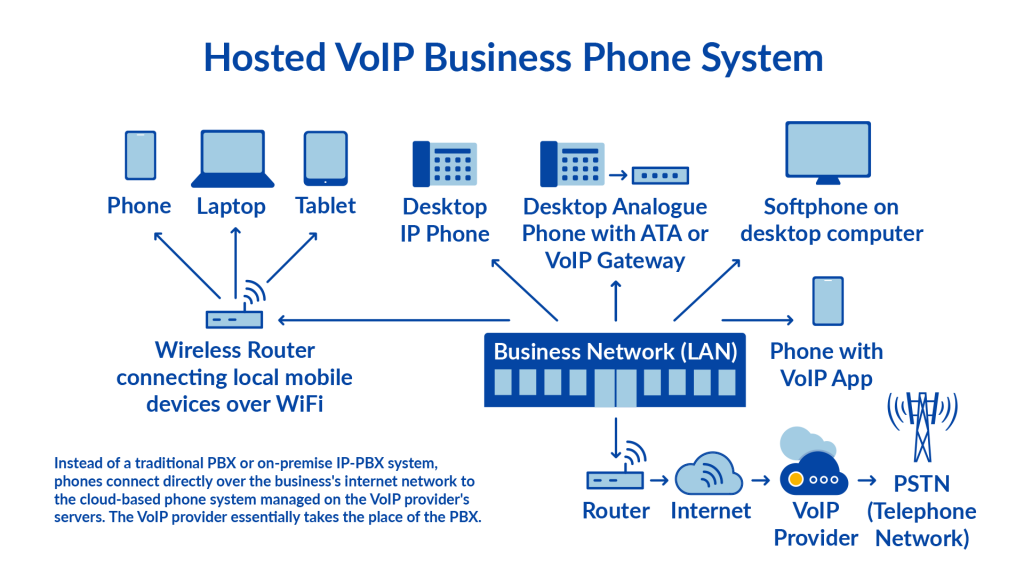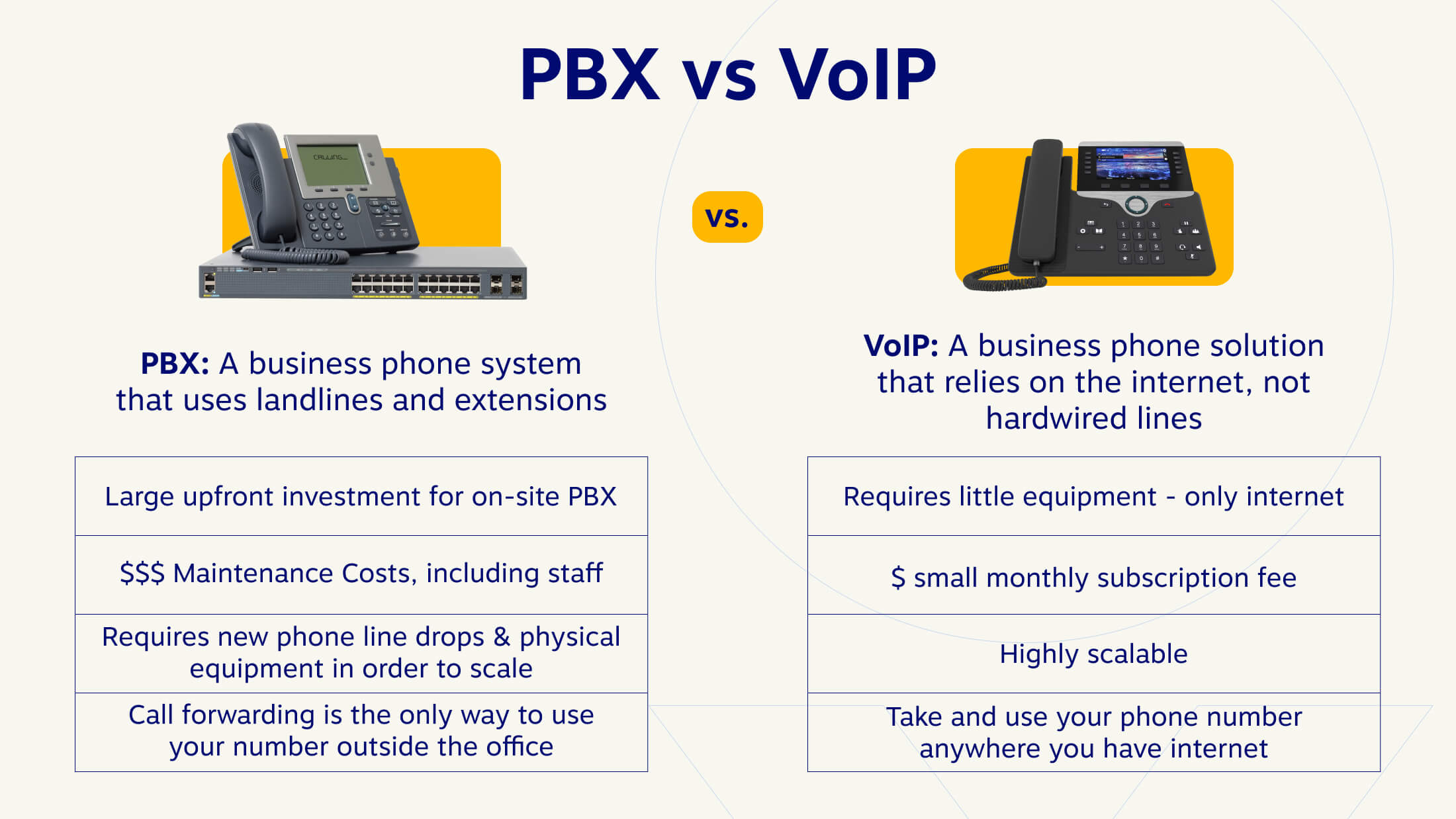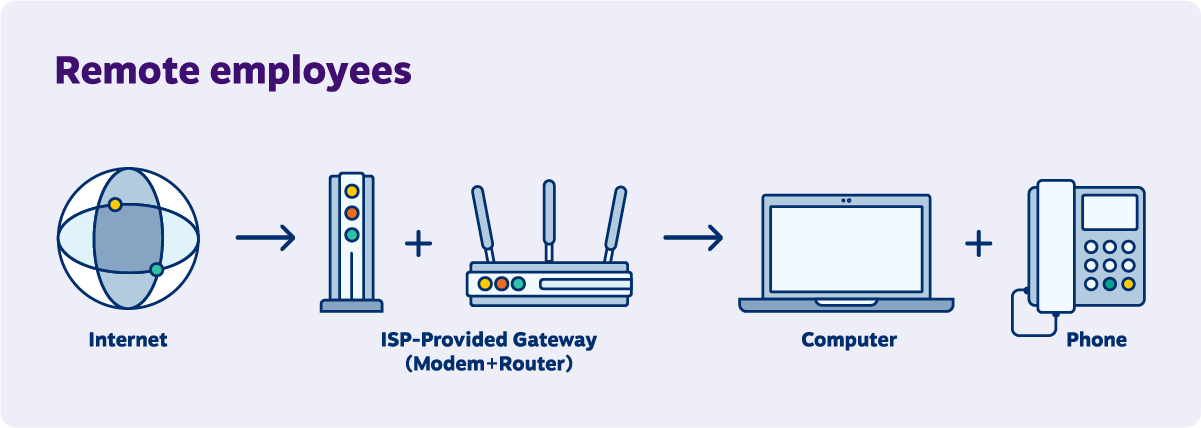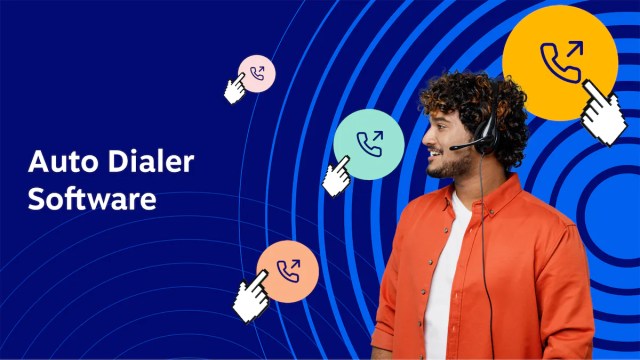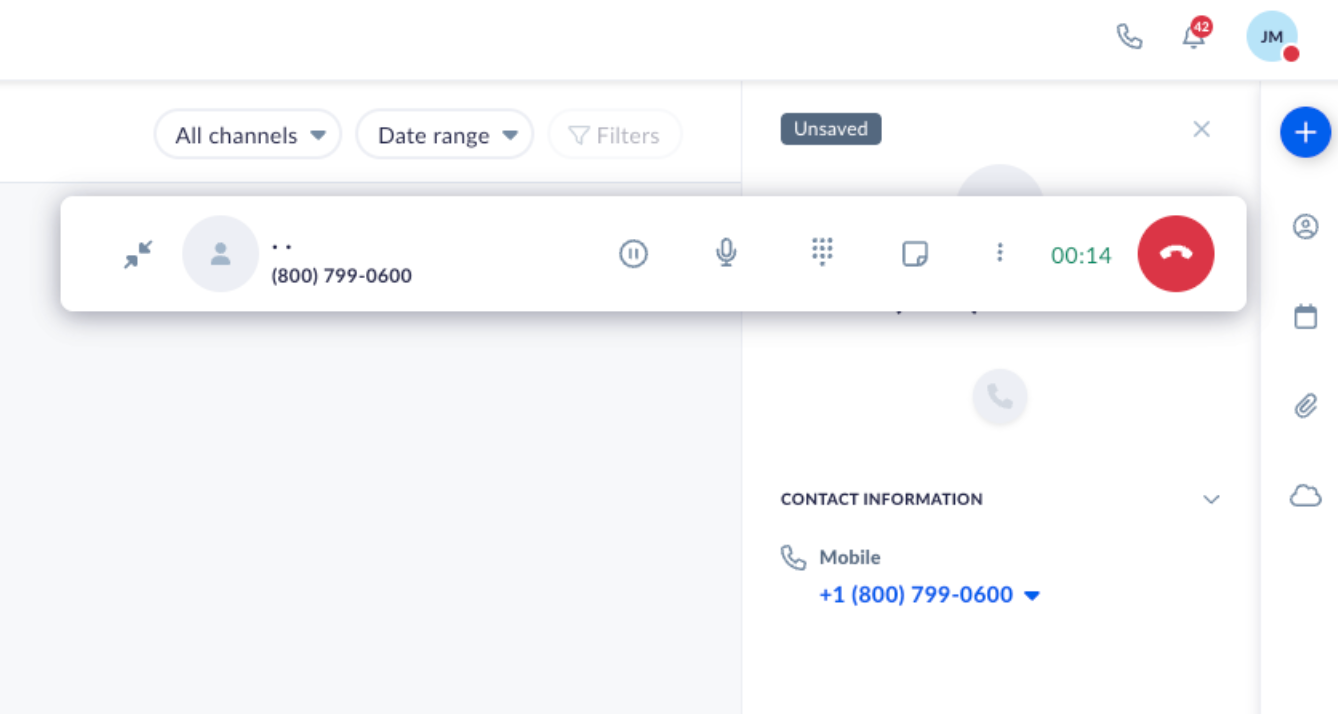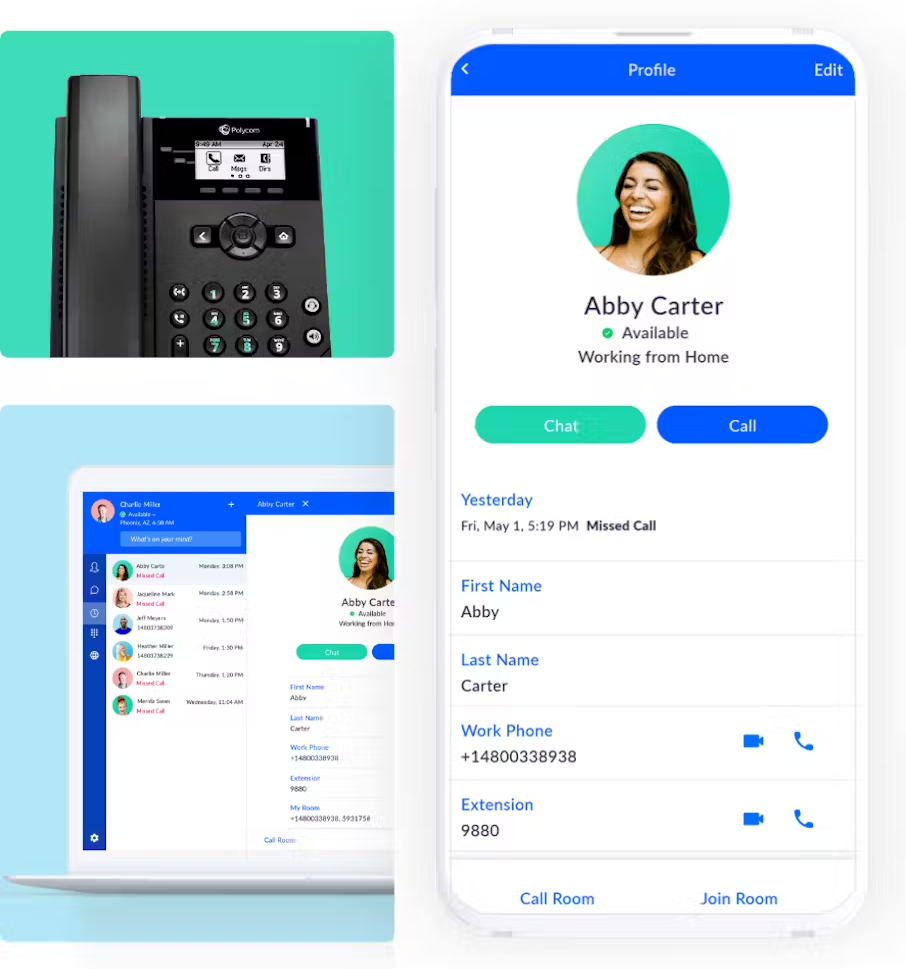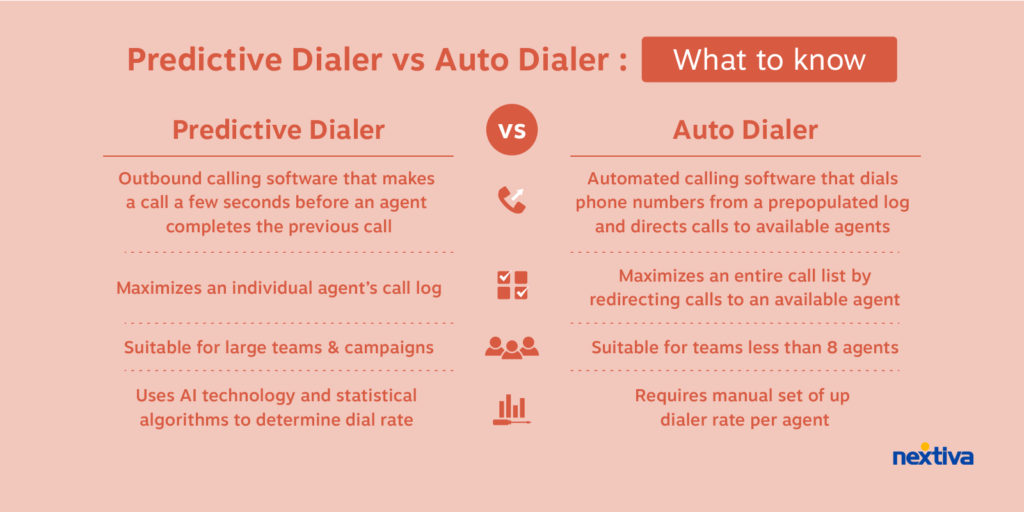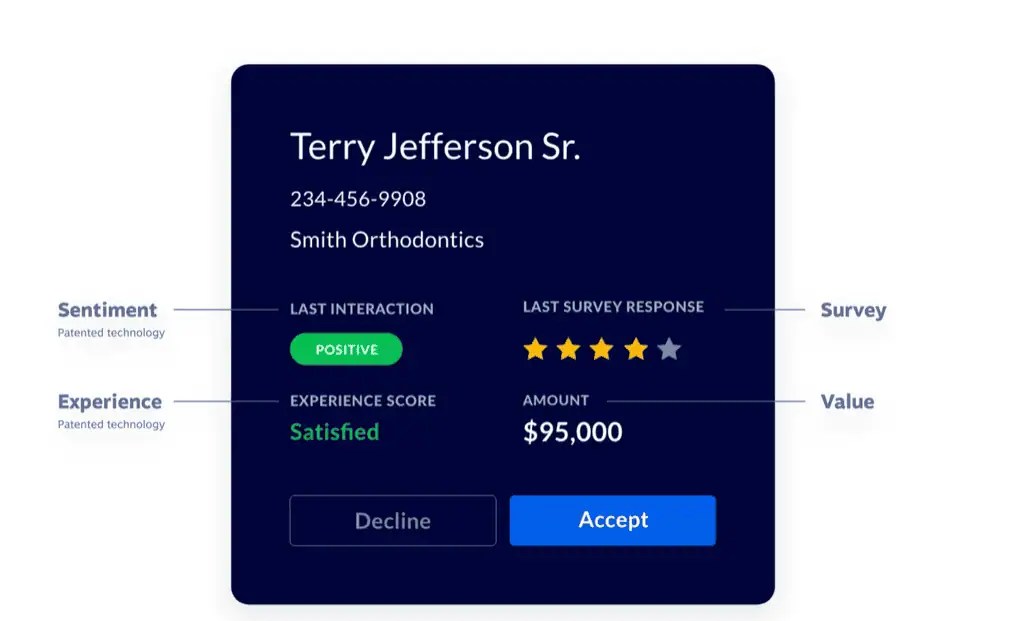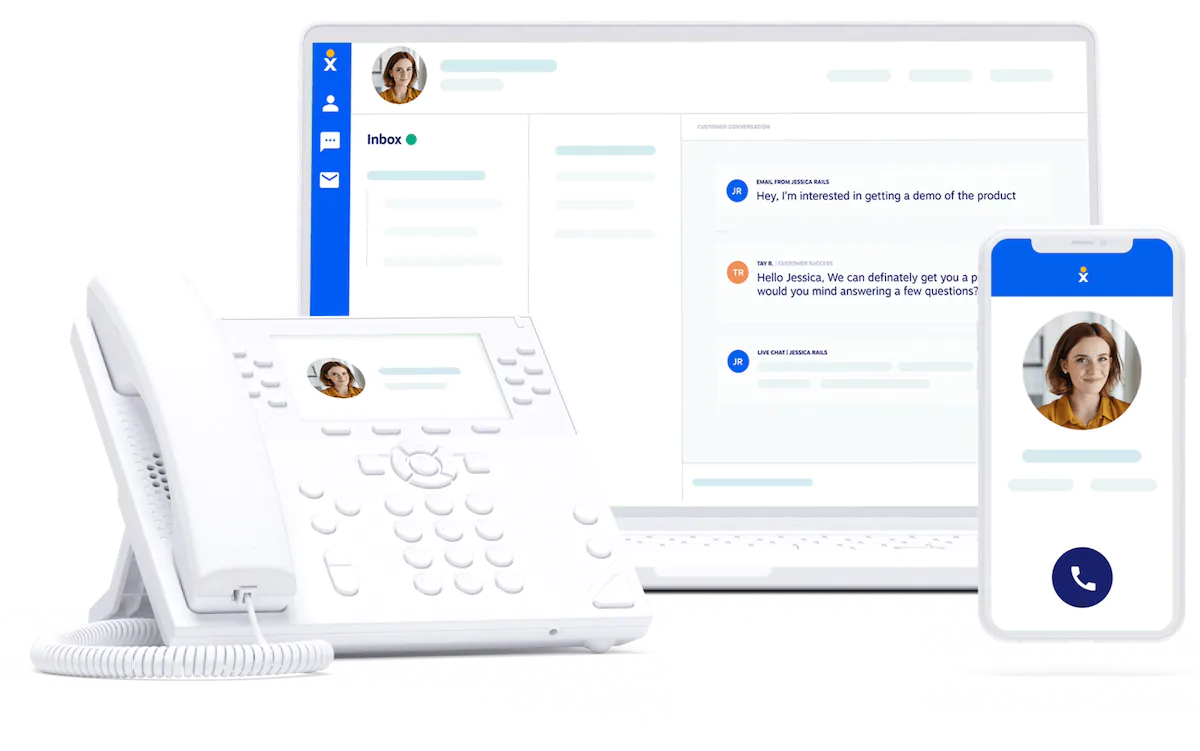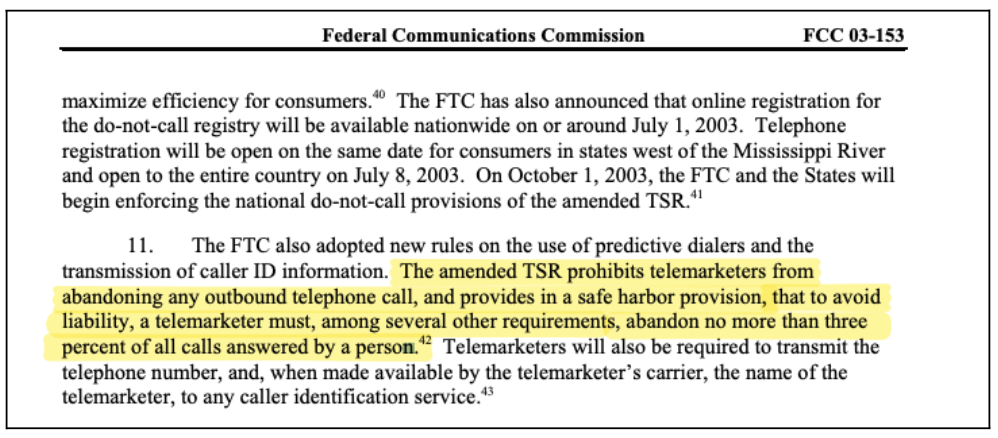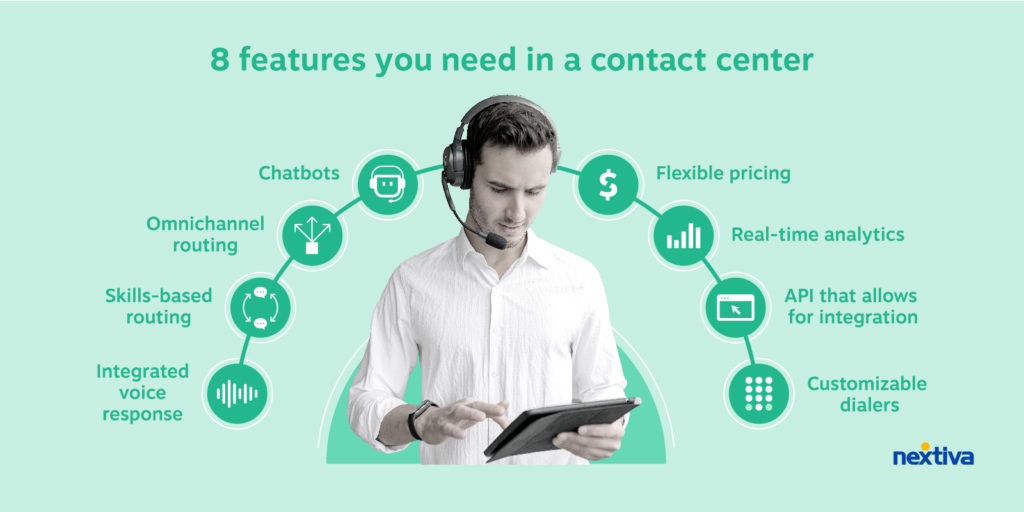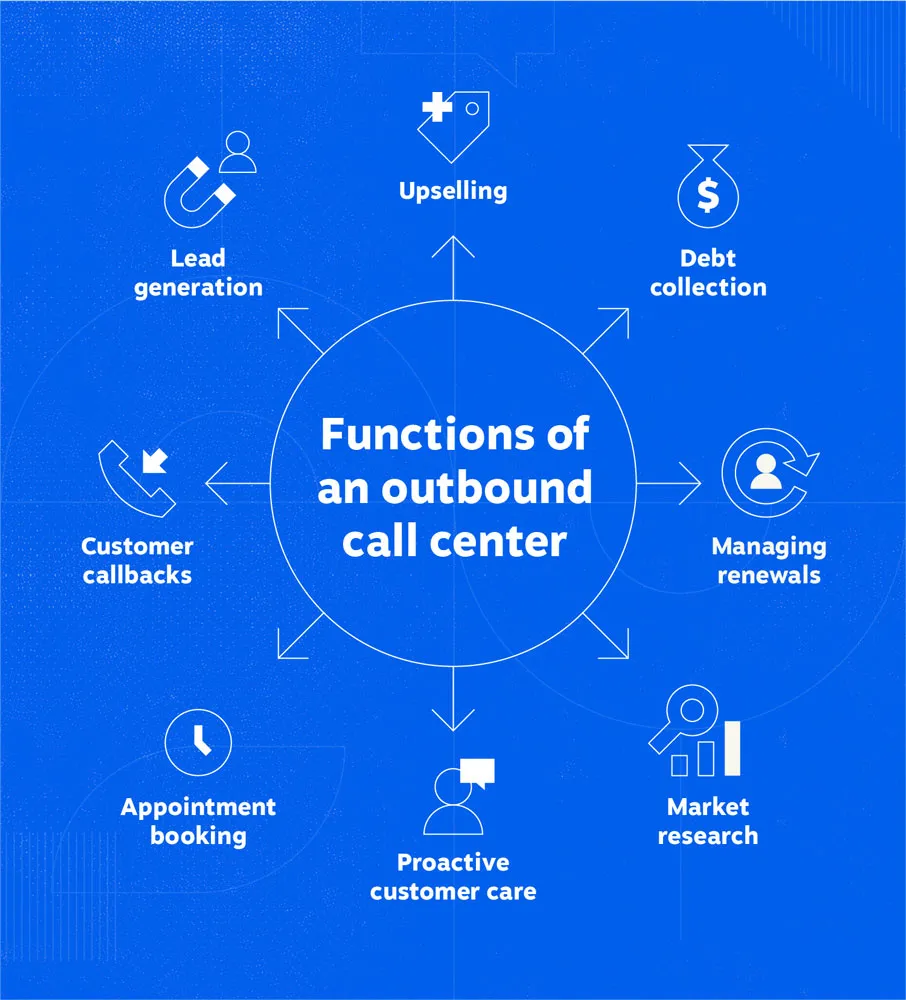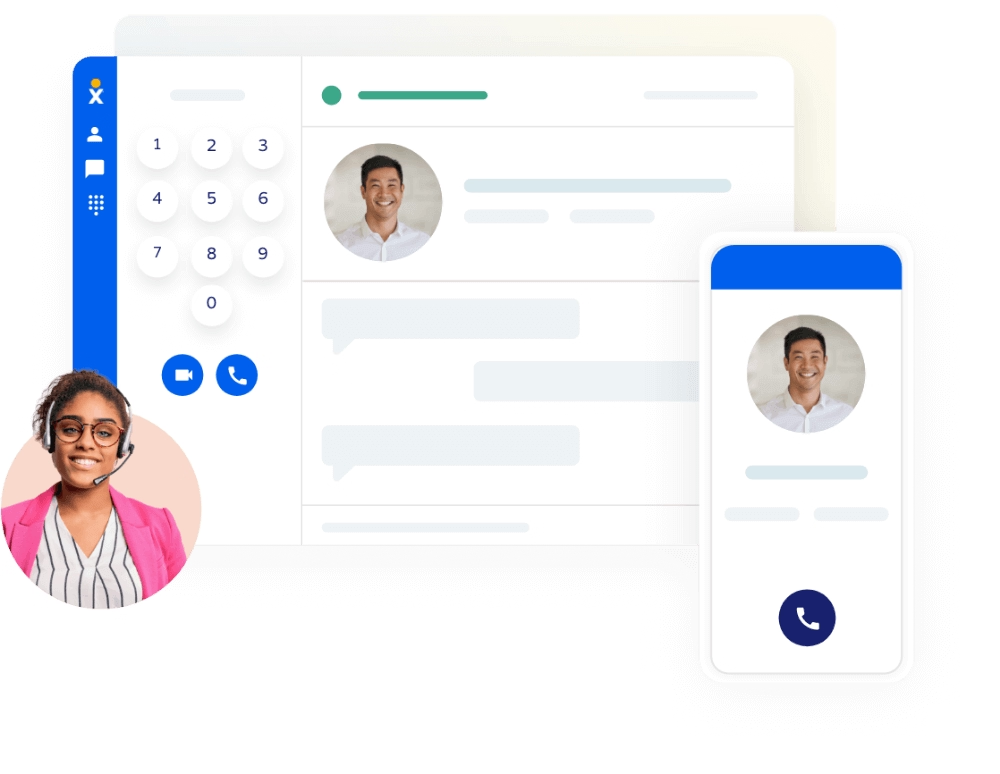When it comes to customer service, not every interaction is a walk in the park. Wouldn’t it be nice to have some useful customer service scripts on hand?
There’s no way of knowing the stress or problems a customer may be facing in their day before they pick up the phone to call a business, making the job of a customer service rep all the more challenging.
Because no two customers and interactions are the same, it’s important to prepare your team to navigate every kind of customer conversation. And while the best types of customer interactions include personalization and empathy on the part of the representative, it can be helpful to have scripts on hand for when agents find themselves in an emotional or tricky situation.
This post will provide you with customer service scripts to help you navigate twenty-four different situations.
What Are Customer Service Scripts?
Customer service scripts are predefined dialogues or guidelines used by customer support representatives to handle various customer interactions. They are particularly useful during difficult situations a contact center rep may experience on the job, such as not knowing the answer or talking with an angry customer.
Practicing how to respond when faced with a strange ask or an upset customer can help a support agent feel more confident when they find themselves in such scenarios.
Additionally, using a customer service call script in training can help agents develop crucial customer support skills like conflict resolution, listening, empathy and self-control.
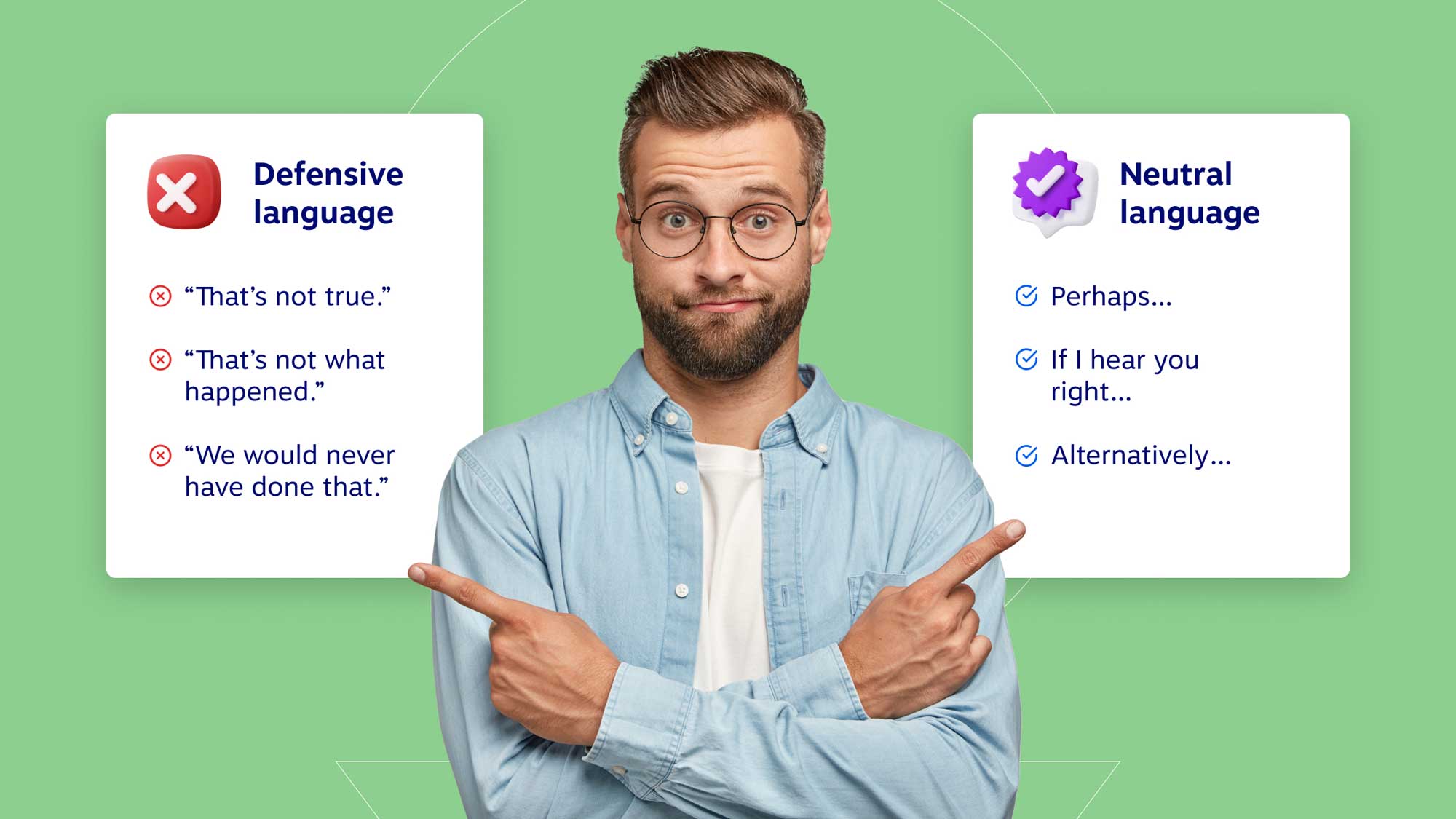
The real-life scenarios that call center scripting revolves around can be used for ongoing training as a way to role-play tricky conversations or difficult customer complaints.
These scripts help ensure consistency, efficiency, and quality in customer service by providing a structured approach to responding to common inquiries and scenarios.
These are the key aspects of customer service scripts:
- Consistency: Scripts make sure that all customers receive the same quality of service, regardless of which rep they speak with.
- Efficiency: By providing ready-made responses for common questions and issues, scripts can help representatives resolve customer inquiries more quickly.
- Training: Phone and live chat scripts serve as a useful customer service training tool for new employees, helping them learn how to handle various customer scenarios.
- Compliance: In industries with regulatory requirements, scripts make sure that call center agents provide necessary disclosures and follow legal guidelines.
- Quality Control: Customer service scripts can be reviewed and updated regularly to improve service quality and address any recurring issues or customer feedback.
- Flexibility: While scripts provide a structured approach, they often include guidelines for personalizing responses to better meet individual customer needs.
Now, let’s get on to the customer service scripts!
How to Navigate 24 Difficult Customer Scenarios with Customer Service Scripts
Here are twenty-four example customer experience scenarios and suggested scripts for dealing with them.
- You received tough feedback on social media
- You don’t know the answer
- The customer wants a refund
- You have to put the customer on hold
- You need to transfer the customer
- The customer wants to know why your product is the best alternative
- You have to tell a customer no
- The customer wants a product that is unavailable
- The customer requests new features to an existing product
- The customer violated the terms of service or terms of use
- The product arrived damaged
- A problem is the company’s fault
- The customer wants to speak to a manager
- The customer thinks the price is too high
- There is a shipping delay
- The customer is extremely angry
- The customer wants a discount
- The customer wants to cancel their subscription/service
- You need to tactfully tell a customer they’re in the wrong
- The customer is asking how secure your website/service is
- You need more time to follow-up on a customer’s request
- The customer has called more than once about the same problem
- The customer speaks another language
- The customer is happy with the service or product
1. You received tough feedback on social media
While you may be tempted not to respond to negative feedback about your business on social media, data shows that consumers expect a response when they take their issue online. According to ReviewTrackers, 53% of consumers expect businesses to respond to their negative reviews within seven days.
When replying to a customer who had a negative experience, here are a few tips to keep in mind:
- Get to the heart of the problem. Make sure you understand the customer issue fully and do some investigating if necessary.
- Give a sincere apology that acknowledges any mistakes on your part, and use the customer name so they know it’s not an automated response.
- Offer to take the conversation offline. This can be helpful if you have additional questions. It can also help de-escalate emotions by showing the customer that you’re empathetic to their problem and seeking a positive solution.
- Remember that criticism is a chance to learn and grow as a company. So avoid getting defensive and instead focus on fixing the problem and avoiding similar mishaps in the future.
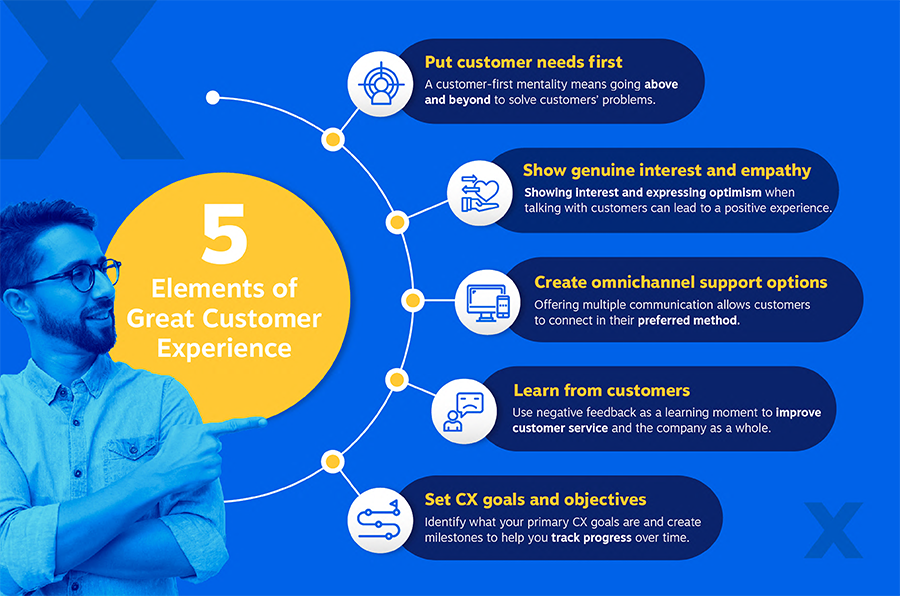
Here’s an example of a script you could use when replying online to negative customer feedback:
| Thank you for your review, [name]. I’m sorry to hear you had a frustrating experience, but I really appreciate your bringing this issue to my attention. That’s not the kind of service we aim to offer and want to do what we can to make it right. One of our customer service reps will be reaching out to you to learn more about your experience. |
It may also be a good idea to have a dedicated social media team with a specific handle (like “customer satisfaction”) that responds to customer complaints. This helps make replies more uniform and keeps better track of both positive and negative interactions.
Here are a few brands’ social media support handles: @NikeSupport, @AmazonHelp and @SpotifyCares
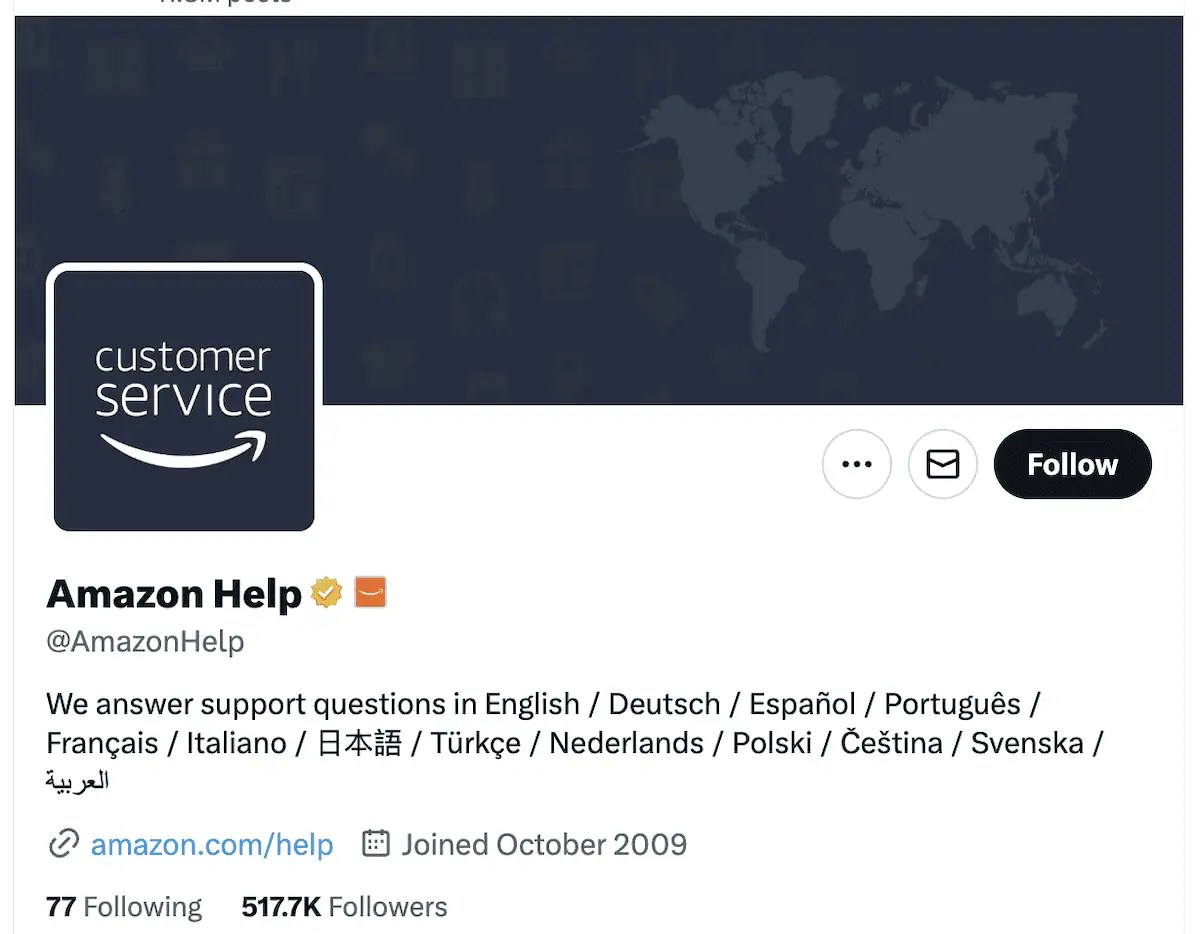
2. You don’t know the answer
There are times when you’re not the best person to answer a customer’s question, and that’s okay. It’s all about how you respond when that does happen. While some experts recommend avoiding saying you don’t know, Apple teaches reps to say, “I don’t know, let’s find out!” This process of learning together can make for a more collaborative and memorable experience.
If you aren’t sure how to respond, check with another coworker or department or offer to follow up with them with a callback. Transferring an impatient or angry customer to someone else should be used as a last step.
Let’s say that a customer has called to ask why the prices of two similar items are so different. The customer service agent isn’t sure about the way these items are priced, so instead of telling the customer he doesn’t know, he says this:
| I don’t want to give you inaccurate information so I’m going to talk with my colleague Brian to find an answer for you. Can you hold just a minute while I check with him? |
3. The customer wants a full refund
A refund is something you’ll want to avoid issuing if possible. This is when it’s important to understand your company’s return policy inside and out. It will help you speed up these conversations and think of creative ways to turn a refund into an alternative, like sending a new product to replace a damaged one or compensating services that weren’t up to par.
Let’s say a customer wants to return a jacket. Start by pinpointing the exact reason they’re seeking a return. Once you do that, you can use the return policy to help frame your response. Here’s one of many customer service scripts that you can use for this:
If the interaction ultimately ends in a refund, the customer will still appreciate the option to try on the smaller size. Another option in this scenario would be to provide a discount code as a way to thank the customer for their business even if it didn’t go as planned.
| I’m sorry that the jacket ended up being too large when you tried it on. Would you like to try the next size down? We’d be happy to ship it to you free of charge so you can try both sizes before making a decision. If the smaller size works, we can do an exchange, and if neither fits, we’re happy to give you a refund. How does that sound? |
4. You have to put the customer on hold
If you have to put a customer on hold, there are a few things to keep in mind. First, know that customers dislike being put on hold, and two-thirds of customers are only willing to wait on hold for two minutes or less.
Next, be sure to ask the customer if you have permission to put them on hold, and give them an estimated wait time:
| Hi Laura, let me check on that for you. Is it all right if I put you on a brief hold while I talk with our shipping department? It should only take a few minutes. |
If you anticipate the wait time being longer than a few minutes and your customer service department has the capability to do outbound calls, you could also offer to call the customer back so they don’t have to wait. Be sure to verify their callback number.
If not, keep the customer updated while they’re on hold if the matter is taking longer to resolve. These check-ins will let them know you haven’t forgotten about them and lower the risk of the their becoming frustrated.
5. You need to transfer the customer
Occasionally, a customer may call the customer service department when their issue is actually related to another department such as billing. When this happens, let them know why they’re being transferred. Keep in mind that transferring customers should be kept to a minimum.
Before transferring the customer, it may be a good idea to alert your colleague about the situation so they have context before taking the call. You can do this by placing the customer on a brief hold, connecting with someone in the right department, and then letting the customer know whom they’ll be speaking to before transferring them. This is known as a warm transfer.
If no introduction is needed or the customer’s issue is very straightforward, you can do a cold transfer where you send a call through to another agent without speaking to them first.
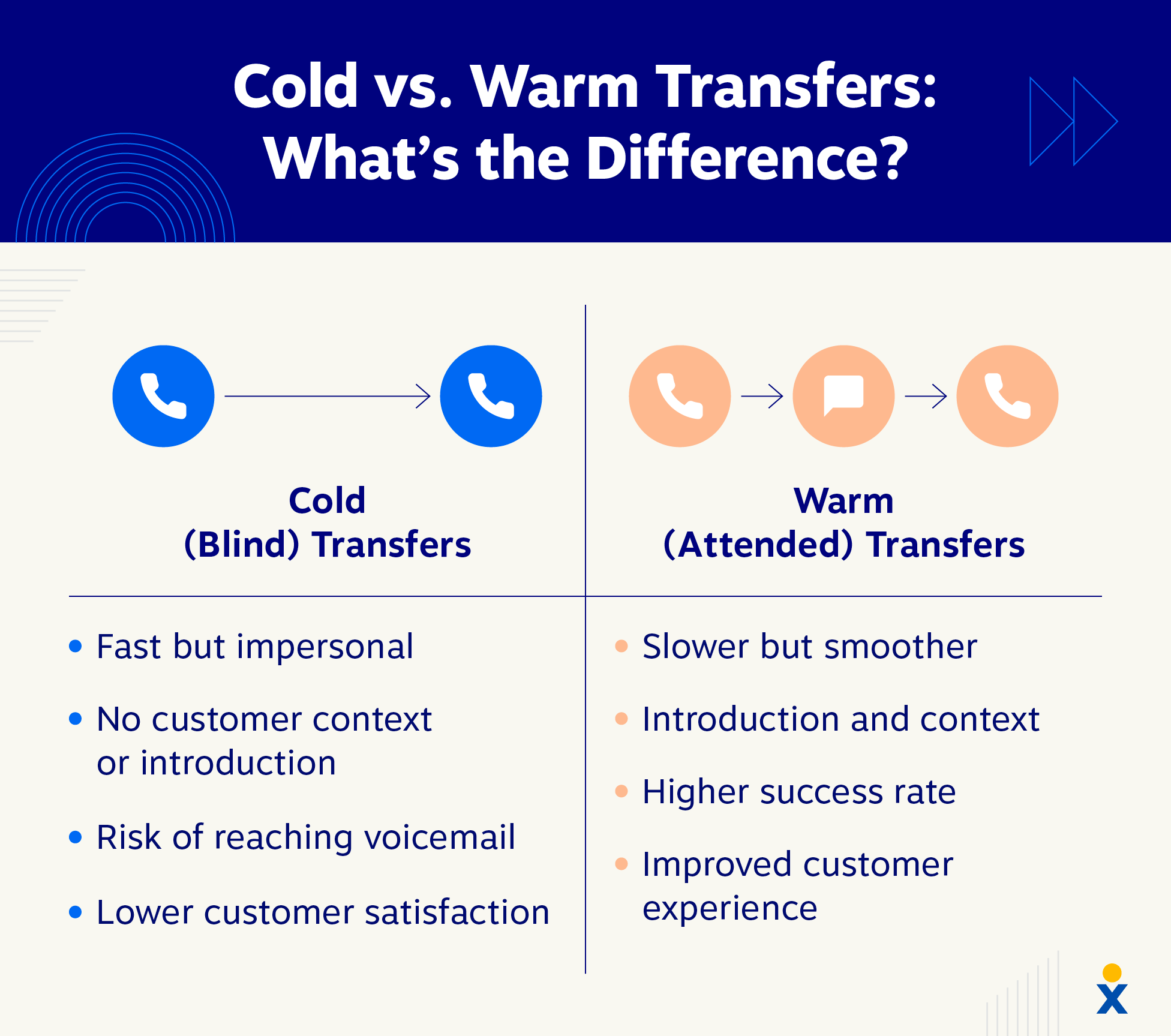
Here’s an example call center script you can use:
| Hi Jessica, thanks for contacting our customer service team. I’m sorry for any confusion, but our billing department will be happy to help answer your question. If it’s all right with you, I’ll transfer you now. |
6. The customer wants to know why your product is the best alternative
As a customer service representative, it’s important to have a working knowledge of the products or services your company provides. You may not need to know a product inside and out, but having a good understanding will help you field more general questions without needing to transfer a customer to another department.
If a customer asks why your product is better than an alternative, you may be tempted to immediately pass them on to the sales team. However, having your company’s value proposition handy could help you at least attempt to answer their question.
Cross-departmental employee training offers a chance for reps to learn responses to frequently asked questions and better equip themselves for these scenarios.
Here’s a general template you can use to respond in this scenario:
| Hi Mark, thanks for reaching out for more info about our [specific product]. [Alternative company] makes a good product, but ours stands out because of the additional features X, Y and Z. If you’d like additional information, I can schedule a demo to show you our product in action. I can also email you a more detailed comparison to. |
Here are a few other things to keep in mind when you’re answering a question like this:
- Be respectful of your competitors. Talking trash about them makes you look bad.
- Provide concrete facts and numbers.
- Offer to share a competitor comparison or a versus page if you have one handy.
7. You have to tell a customer no
While the age-old adage “the customer is always right” holds true in certain situations, sometimes you do have to tell a customer that the answer is no. This can be a delicate situation, so here are a few tips to keep the interaction from escalating.
- First, ask additional questions to help you understand what exactly the customer is requesting. You can also try phrases like “What I’m understanding is that you’d like X” to help you and the customer get on the same page.
- Keep your tone positive. While these situations can be tricky, changing your tone from positive to robotic can seem as though you’re not empathetic to the customer.
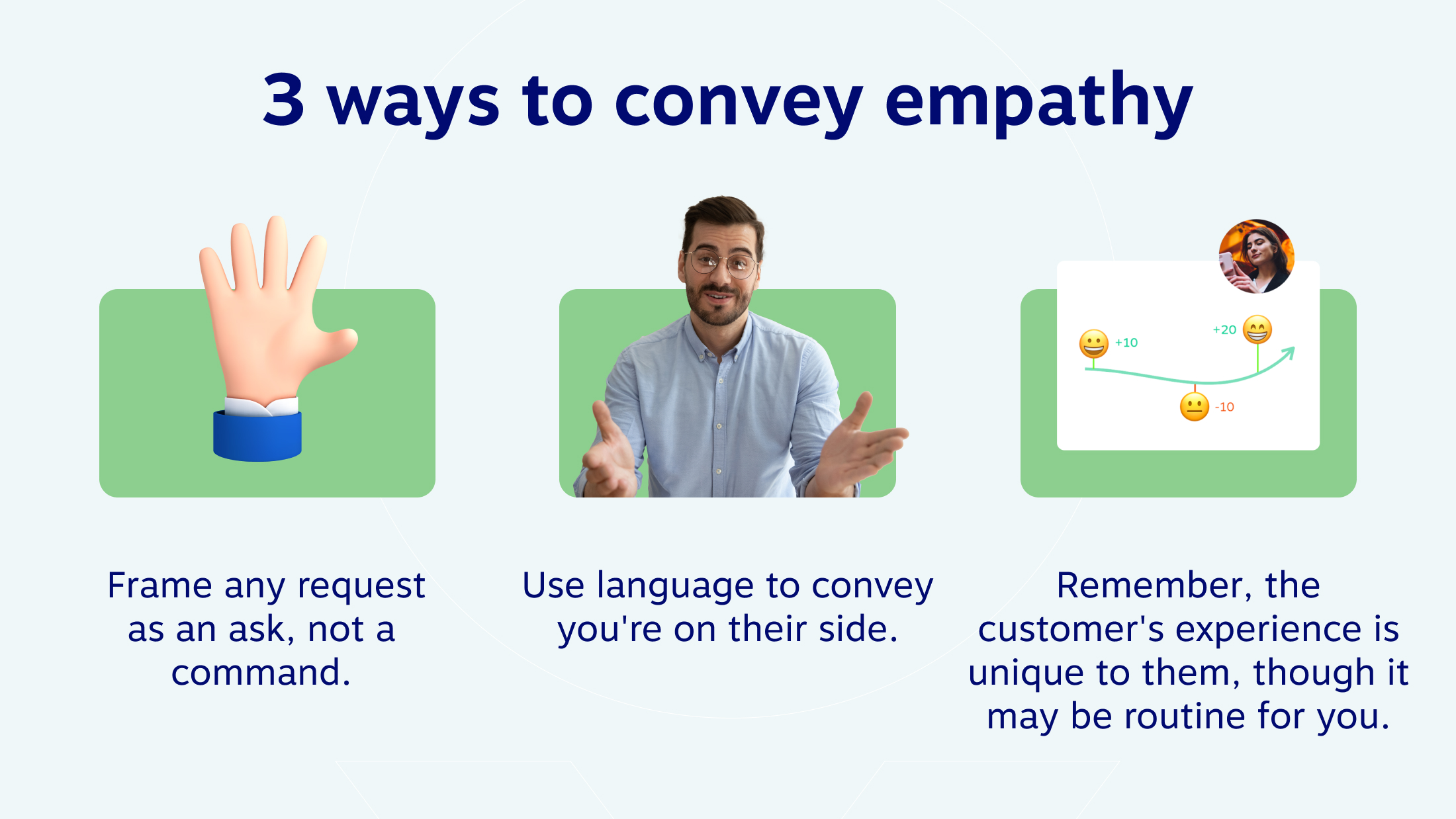
- Loop the customer into the solution. As you’re working to resolve the customer’s issue, try phrases like “How does that sound?” or “What do you think would be a fair solution?” This can open up a fruitful dialogue and make the customer feel that their problem is being taken seriously.
- When you do have to say no, explain why. If a customer has requested a feature that is not yet available, let them know that the product team is working on another highly requested feature but that you will share her feedback with them. Or if something is unavailable or out of stock, explain why. This will help the customer feel as though you are listening to her even if the answer is no.
Here’s an example of how that conversation could look
| Hi Allison, thanks for giving me a bit more information about your request. At this time, we don’t sell that particular product. I’m sorry for any inconvenience this may cause. While it’s not the exact product you mentioned, we do have [product name] that has [list similar features or a feature that makes it better than the product the customer inquired about]. Would you be interested in trying this product out? |
8. The customer wants a product that is unavailable
Positivity is key with scenarios like this one. Even if a product is out of stock or unavailable, try to offer a similar product or issue a discount code for a future purchase.
Businesses using Shopify have the ability to offer stock updates through email or push notifications. Customers can receive automatic notifications when the item they’ve been eyeing is available again.
Here’s an example of how you could respond to a customer:
| Hi Ethan, I’m sorry to hear that the product you wanted is out of stock. That’s one of our most popular products! After taking a quick look, I see that the product will actually be available next month. I can place the order for you right now and make sure that it is sent to you as soon as it reaches our warehouse! Does that sound all right? |
9. The customer requests new features to an existing product
Occasionally, a customer may request new features for an existing product that aren’t currently available. You might be unable to implement those features for a number of reasons, but a standard response can help make it a smooth interaction.
Here’s an example phone or live chat script of how you could respond:
| Thank you for taking the time to share this idea with us. I’ll be sure to pass it along to our product team. Unfortunately, we can’t implement it at the moment as our team is working on X. If that should change, I have your contact information on file and will reach out to you personally to let you know. |
Feature requests also offer an opportunity to cross-sell or upsell another product with similar features and functionality.
10. The customer violated the terms of service or terms of use
Another potentially uncomfortable situation you may face is letting customers know they violated the terms of service. In this instance, it’s best to assume positive intent and seek to remind them about the terms of service.
They might be unaware they’ve done anything wrong. Either way, contacting them will help you understand their origin and find an alternative solution.
Here’s an example of how you could approach this conversation:
| I’m calling to let you know that the TOS you agreed to on [insert date it was signed] has been violated. That includes [provide more detail about what was specifically violated]. I wanted to let you know about this and see if you had any questions regarding your account? I’m happy to address any further questions or concerns. |
11. The product arrived damaged
If a customer has received a defective product, swift customer service intervention could help alleviate any anger or annoyance the customer may feel. The first thing you should do is ascertain what was damaged.
One of the best ways to do this is to have the customer send a picture of the damaged item. From there, you can offer to ship a replacement as soon as possible. If the product is out of stock, you may need to provide a refund.
Either way, be apologetic and take responsibility for the mishap — even if it’s not your fault. This could also offer an opportunity to work with or send specific customer feedback to the fulfillment team. Maybe they packaged the product to save costs or time which led to a damaged product (and an unhappy customer!).
Sharing this type of feedback with the greater team helps to put the customer first and improve every aspect of the customer experience.
Here’s an example of how you might navigate this scenario:
| I’m so sorry to hear that your [product name] arrived damaged. This is not the experience we aim to provide for our customers and we want to make this right. After looking at the photo you sent, it does appear that the screen arrived cracked. We would be happy to send you a replacement free of charge with priority shipping. How does that sound? |
12. A problem is the company’s fault
Mistakes happen, but how you resolve them leaves an impression long after the customer interaction is over. If a problem is the company’s fault, it’s best to address the issue as soon as possible and proactively reach out to the customer in advance, if feasible.
Let’s say a customer spoke to a representative to cancel their monthly subscription but ended up receiving a notification email the next day that the order was on its way. The customer also noticed they had been charged for the order.
Here’s an example of an effective call center script to let them know what’s going on:
| I’m so sorry for this inconvenience and this is completely on us. It does look like you spoke with Anna yesterday, but your order wasn’t actually cancelled. I’m not sure why this happened but here’s what I can do. I’ll credit you back the cost of the order so you can keep the delivery for free. How does that sound? |
It’s also a great customer service practice to initiate the conversation about a problem to get ahead of customer communication.
HelloFresh does a great job of this regarding recalled produce that may have been included in certain meal kits. The company outlines exactly what type of product to check on and apologizes for any problems the recall may have caused.

13. The customer wants to speak to a manager
If a customer insists on speaking to a manager, it’s best to listen to the customer to see if you can prevent the situation from escalating.
Oftentimes, your leadership will offer the same explanation as you anyway, but hearing it twice can be enough to convince the customer.
Here’s an example of how to reply:
| I completely understand and thank you for your patience. My manager, Laura, is happy to talk to you. I’ll transfer you over right now. |
14. The customer thinks the price is too high
If a customer thinks that the price for a product is too high, you can start by justifying the price by describing the product’s unique features. Talk up the value of your product and dive into key features that make your product worth buying.
Here’s a scripting example of how to respond:
| I understand that this is an investment and wanted to share a bit more about what makes our product stand out. [Explain benefits of feature one, two, and three.] If the price seems too expensive, we do offer a semi-annual sale on [date] and this product will be on sale. Does that help? |
If the customer is still not satisfied, you share a discount code if you are able to do so.
15. There is a shipping delay
Shipping delays happen, and they’re often out of your control. When a customer calls to ask where their item is, it’s important to be transparent about the situation. Are there industry-wide problems? Supply chain issues?
For example, when Boxycharm, a cosmetics subscription box company, discovered their shipments would be delayed two weeks, they immediately sent an email out to all their customers letting them know and providing a timeline for when they would receive the box.
Communication is key in this customer service scenario, and agents should look to provide a realistic – not an idealistic – date of when the individual can expect their package. It’s better to have the product arrive early than tell them an unrealistic arrival date and risk letting your customer down.
Here’s a sample script to help you navigate this situation:
| Hi Chris, I’m so sorry for the delay. We understand how frustrating it can be to have orders not go out on time. Many of our most popular items are out of stock unexpectedly, which has caused us to not be able to ship in a timely fashion. We apologize for the inconvenience this is causing. To help address the situation as quickly as we can, your order has been split into two separate shipments so that you can at least receive the products that are currently available. |
One example of a company that handled this issue well is Pura, a home fragrance provider. When supply chain issues impacted monthly shipments, they sent an email to customers with an explanation of why this was happening along with a solution and a promo code of 50% off a future order.
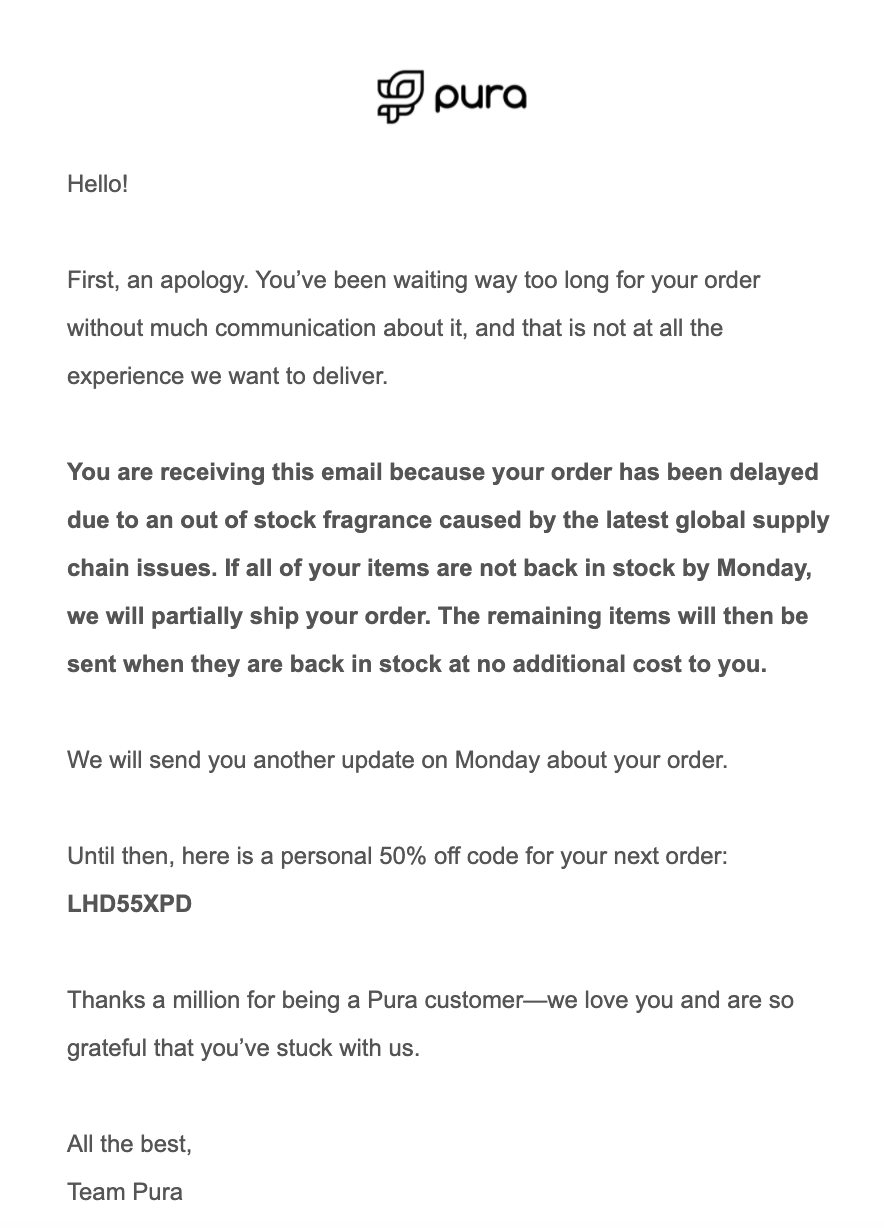
16. The customer is extremely angry
When an angry customer reaches out and gives you an earful about their experience, it can be easy to go on the defense. Instead, try to keep a positive mindset and get to the root of the customer’s unhappiness.
Remember to treat your customer with respect and use positive phrases such as “I appreciate your bringing this to our attention” and “Your business means a lot to us.”

Let’s say that an upset customer is calling about an item they were billed for that never arrived. Here’s an example of how you could begin this type of situation:
| Hi Aaron, thank you so much for bringing this to our attention. This is not the type of experience we want to provide for our customers and I can understand your frustration. Let’s find out why this has happened. |
If your solution or explanation doesn’t de-escalate the situation, it might be a good time to loop in your supervisor. And if the customer uses curse words or disrespectful language, it’s probably time to end the conversation.
As Shep Hyken points out, not every customer is right for you: “If the customer crosses the line, it may be time to fire the customer, politely sending them on their way to the competition.”

17. The customer wants a discount
Customers may be looking for a discount for a number of reasons. And discounts are more common in certain industries like e-commerce than in the service industry, meaning that how you approach the customer conversation will differ depending on your industry.
Let’s say you work at a cleaning company, and a customer calls to ask about a discount on a home cleaning service. It’s not in your company policy to give discounts on cleanings. To find out more information, you ask why the customer is looking for a discount. It turns out that they don’t want their entire house cleaned, just a portion of it.
Here’s how you can approach that conversation:
| Hi Ben, I completely understand your not wanting to pay for a full house cleaning if you only want to have the bathrooms cleaned. We do offer cleanings by room. You mentioned you have two bathrooms that need to be cleaned. The price for that would be $50 — which is half of what a full home cleaning would cost. Is that something you’re interested in? |
Alternatively, a customer may come to you with an expired coupon asking if they can still use it. You can use your best judgment based on your experience and your company’s policy on whether or not to honor the expired coupon. Or you could try offering an ongoing coupon code instead.
18. The customer wants to cancel their subscription/service
A customer looking to cancel their subscription offers a great opportunity for you to convince them to stay by giving them a discount or additional incentive. This is a common occurrence with subscription services. In fact, a McKinsey report found that 40% of e-commerce subscribers have canceled their subscriptions.
You can get to the root of why they want to cancel by asking additional questions during your conversation. Here’s an example of how that could go:
| Hi Preston, thanks for reaching out. I understand you’re looking to cancel your monthly subscription. I can certainly help you with that, but first, may I ask why you want to cancel? |
If price is an issue, offer a discount if possible or monthly payments rather than one lump sum. If the customer still wants to cancel after exploring additional options, honor her wishes. Let her know that you’re grateful for her business, and if she’s open to it, share a survey link to learn more about her experience to help you with future customers.
19. You need to tactfully tell a customer they’re in the wrong
A key thing to remember if you encounter a customer who’s in the wrong is to avoid the words “you’re wrong.” And don’t place blame on the customer.
Let’s say a customer typed in the wrong shipping address when they did their online checkout.
Here’s an example of a customer service script you could use:
| I’m so sorry your package arrived at the wrong address. After looking into your order, it does appear that the address you typed in is where it arrived. I’m happy to ship out a new package while we wait for the original to be returned to sender. Would that work? I’m also happy to update your customer preferences to remove the incorrect address to help avoid this in the future. |
Offer clear examples of things they can try to resolve the issue. If sharing a video or more in-depth article on your FAQ page is easier, you can also do that. These simple online reputation examples can improve your standing with customers.
20. The customer is asking how secure your website/service is
Understandably, security and privacy are top concerns for customers when choosing a product or service. It’s important to have a working knowledge of what your product does and does not offer security-wise.
You can do this by focusing on your product’s strengths and giving clear examples of how your product offers security.
Here’s an example of how you could respond:
| I appreciate your taking the time to ask about our [product name]. We understand that security is a top concern for our customers so we’ve worked hard to implement [feature] to avoid data breaches. We also have [feature] and a dedicated staff of data engineers to help keep your information safe. Does that help? |
21. You need more time to follow up on a customer’s request
If a customer’s request requires contacting several departments or getting approval from the manager of your customer service team, it may benefit the customer to give them a call back rather than put them on hold.
You could also try the sandwich method of information delivery by giving them a compliment, telling them the bad news, and ending with another compliment.
Here’s an effective call center script for that:
| What a great question. To provide you with the best possible answer, I’m going to need to check with a few of my colleagues. Is it alright if I give you a call back later this afternoon after I’ve spoken to them? I appreciate your patience and thanks again for bearing with me as we work through this. |
22. The customer has called more than once about the same problem
Customers may contact you multiple times with the same question or problem. Billing-related questions are often reasons that they call multiple times, as you can see in this McKinsey study:

As a general rule of thumb, a customer’s problem should be resolved after the first call. This is called first call resolution (FCR) or first contact resolution. The more times a customer has to contact a business to get their question answered or their problem solved, the more likely they are to get angry.
You can keep your FCR rate high by actively listening to your customer and seeking solutions to help make the process easier for them. If they’ve called multiple times about where to find their bill, you might help them bookmark that page on their browser for easy future access.
Let’s say a customer calls monthly to make sure their payment went through. Here’s an example of how you can help them:
| Hi Christy. After taking a quick look at your account, it does appear that your payment went through. Did you see a notification after you hit “submit” letting you know that your payment was approved? Next month, if you wait a few seconds after submitting, you should see that notification. You can take a picture of it for your records and if any problems arise, we’ll be sure to reach out to you. |
For a more long-term solution, think about adding the customer’s question to your FAQ page or creating automated emails that let a customer know that their payment went through correctly.
23. The customer speaks another language
When communicating with a customer whose native language is different from yours, there are a few things to keep in mind:
- Keep your words simple and avoid jargon or slang words that can be easily misinterpreted.
- Talk slower, not louder.
- Repeat what you’re hearing by using phrases like “I’m hearing that you’re experiencing X, is that correct?”
- Use Google Translate or a similar website to translate phrases.
- Try omnichannel methods like chat or SMS if both you and your customer continue having trouble understanding one another.
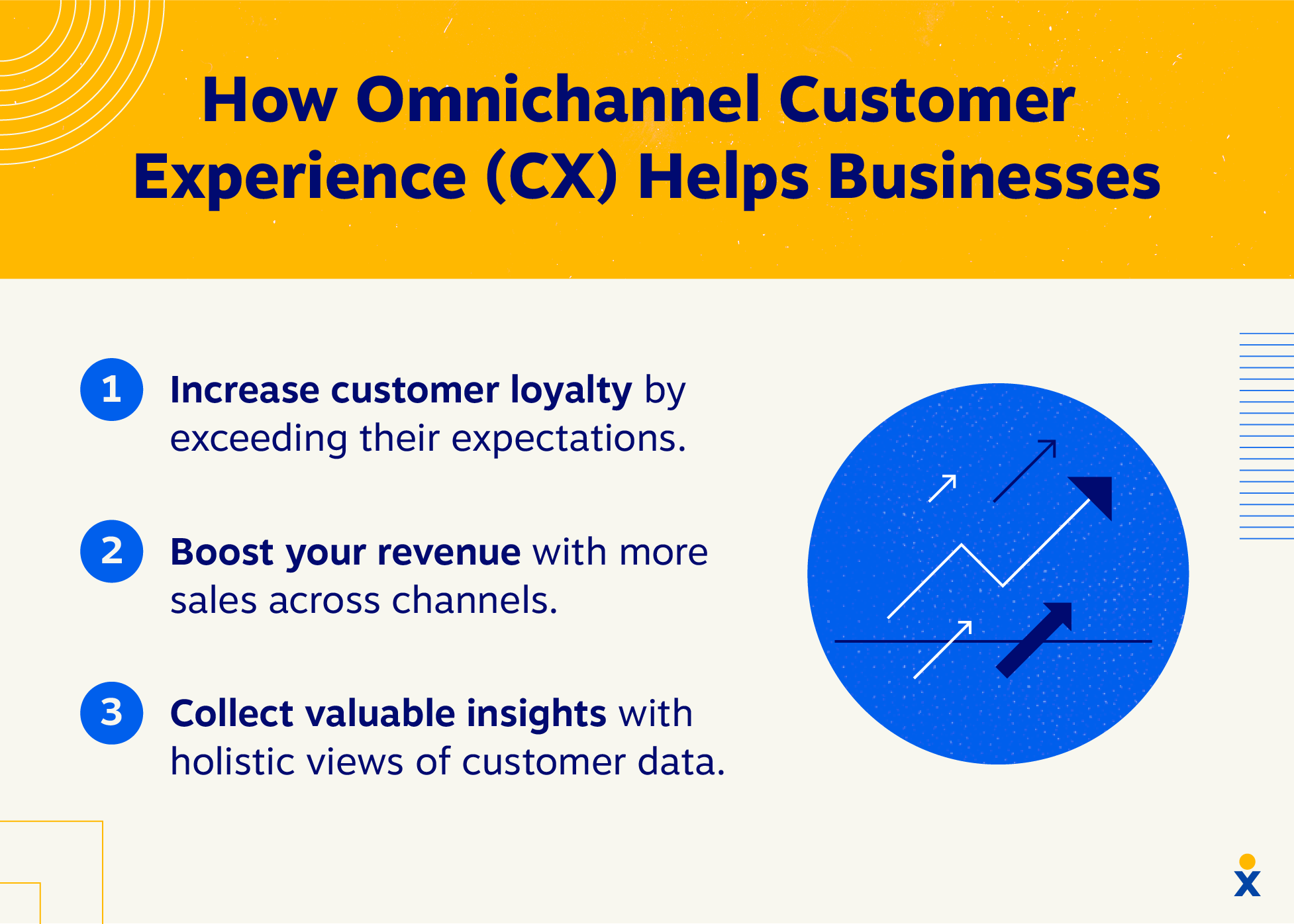
Here’s an example of what you can say if you pivot to chat or SMS from a phone call:
| Hi Jessica, thank you for your patience. Would you be okay with finishing our conversation through text to help us better understand each other? I will stay on the line as we communicate in case you have any trouble. |
If you have an international customer base or want to grow it, it’s a good idea to increase the number of bilingual support staff agents or invest in an interpretation service to show that you value your customers.
24. The customer is happy with the service or product
For our final call center scripts example, let’s end on a high note!
Not every customer interaction is negative, so receiving a call that a customer is happy with the service or experience can be a breath of fresh air. Always start these conversations by thanking the customer for sharing their thoughts and finding out a bit more about what made their experience a great one.
Here’s an example of how to reply in this case:
| I’m so happy to hear that you had such a positive experience, Sierra! We really appreciate your taking the time to share your experience with us — and are delighted to hear that you loved [insert the specifics about their positive experience]. We look forward to working with you again in the future! |
You could also offer the customer a link to help them share their thoughts with other customers through a short survey or online review.
Nextiva’s Helpdesk Tools Solution
Difficult customer conversations are bound to happen, but combating them with helpful customer service scripts can help minimize the number of disgruntled customers.
Try using inbound call center scripts during customer service scenario examples as a role-playing exercise to troubleshoot before the situation involves an actual customer.
For additional resources to help you provide an excellent customer experience, Nextiva’s Service Tools makes it easy for your teams to know more about their customers and answer questions faster — something customers (and agents) will love!








![How to Respond to Positive Reviews [Guide + Templates]](https://www.nextiva.com/blog/wp-content/uploads/sites/2/2023/04/how-to-respond-to-positive-reviews.jpg?w=96&h=96&crop=1)

